
North Central Conservation District






North Central Conservation District




North Branch Park River Green Infrastructure Design & Watershed Plan Update
Classical Magnet School
June 10, 2024
• Welcome & Introductions
• Project Background
• Project Goals and Scope
• Green Infrastructure Concept Development
• Project Schedule – What’s Next?
• Questions and Discussion
• Design Stations
Thanks to Classical Magnet School, Asylum Hill Neighborhood Association & West End Civic Association!
• North Central Conservation District
− Joanna Shapiro, Fiscal Agent/Project Oversight
• Fuss & O’Neill
− Erik Mas, PE, Technical Lead/Project Manager
− Akta Patel, PE, Design Engineer
− Andrew Bohne, RLA, Landscape & Ecological Design
• Meri with Park Watershed
− Mary Rickel Pelletier, Project Coordinator
• Trust for Public Land
− Brian Martin, Community Organizer
− Cally Guasti-O’Donoghue, Community Engagement

North Central Conservation District




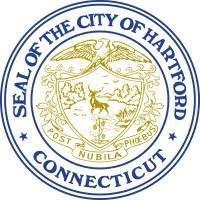


Funding Source
Long Island Sound Futures Fund

Matt Hart* CRCOG
Caitlin Palmer* CRCOG
Denise Savageau CT Conservation Districts
Alicea Charamut Rivers Alliance of CT
David Mann Bloomfield Conservation Comm.
David MacDonald Asylum Hill Neighborhood Assoc.
President West End Civic Association
Marion Griffin Hartford NEXT
Evelyn Green Resident Blue Hills
Bongi Magubane Resident West End
Janice Castle City of Hartford, Community
Randal Davis* City of Hartford, Planning
Owen Deutsch* City of Hartford, Planning
Nick Casparino* City of Hartford, DPW
Frank Dellaripa* City of Hartford, DPW
Mike McGarry Hartford Flood Commission
Greg Sommer Town of West Hartford
Duane Martin Town of West Hartford
Yaw Darko CT Land Conservation Council
Amy Patterson CT Land Conservation Council
Grady Brockway Aide to House Speaker Ritter
Kellie Guilbert Aide to Senator McCrory
Marilyn Bantz CT DAS Property Manager
Ashley Stewart CT Green Bank
Marlene Krajewski* CT DEEP
Erik Bedan* CT DEEP
Christopher Bellucci* CT DEEP
Jason Waterbury* MDC
Jeremy Galeota* MDC
Zbigniew Grabowski UConn CLEAR
1. Summarize the project background, goals, and scope
2. Share green infrastructure design concepts
3. We want your feedback!
− What does the community value and want as outcomes for the North Branch Park River and its watershed?
− What current priorities (desires/aspirations) might shape the vision for the future of the North Branch Park River watershed and its communities?
− Feedback on design concepts. Which design concepts would the community like to see implemented?

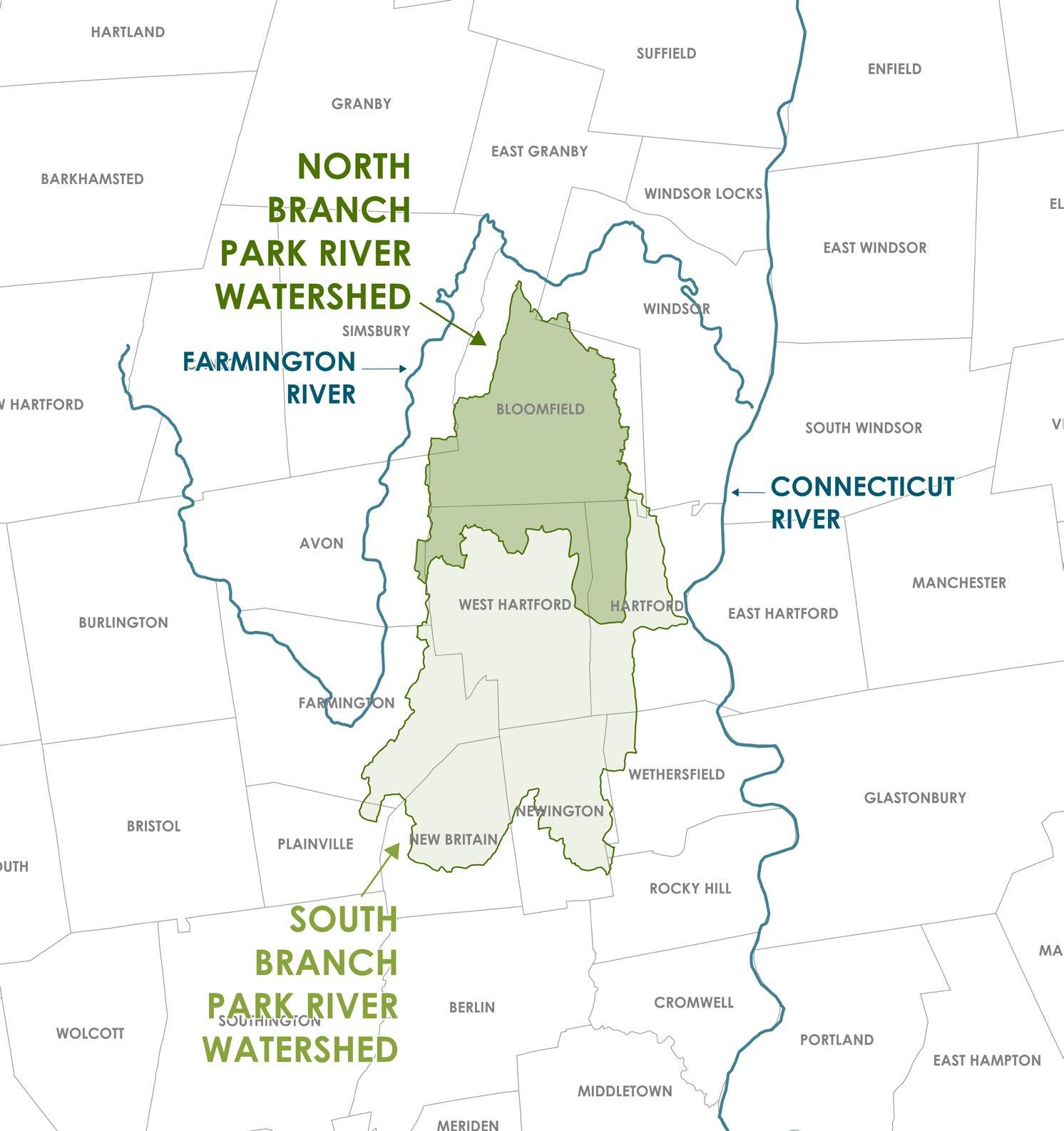

48,000 WATERSHED POPULATION
HOW MUCH OF THE WATERSHED DOES EACH MUNICIPALITY COMPRISE?
WHAT PERCENTAGE OF EACH MUNICIPALITY IS WITHIN THE NBPR WATERSHED?
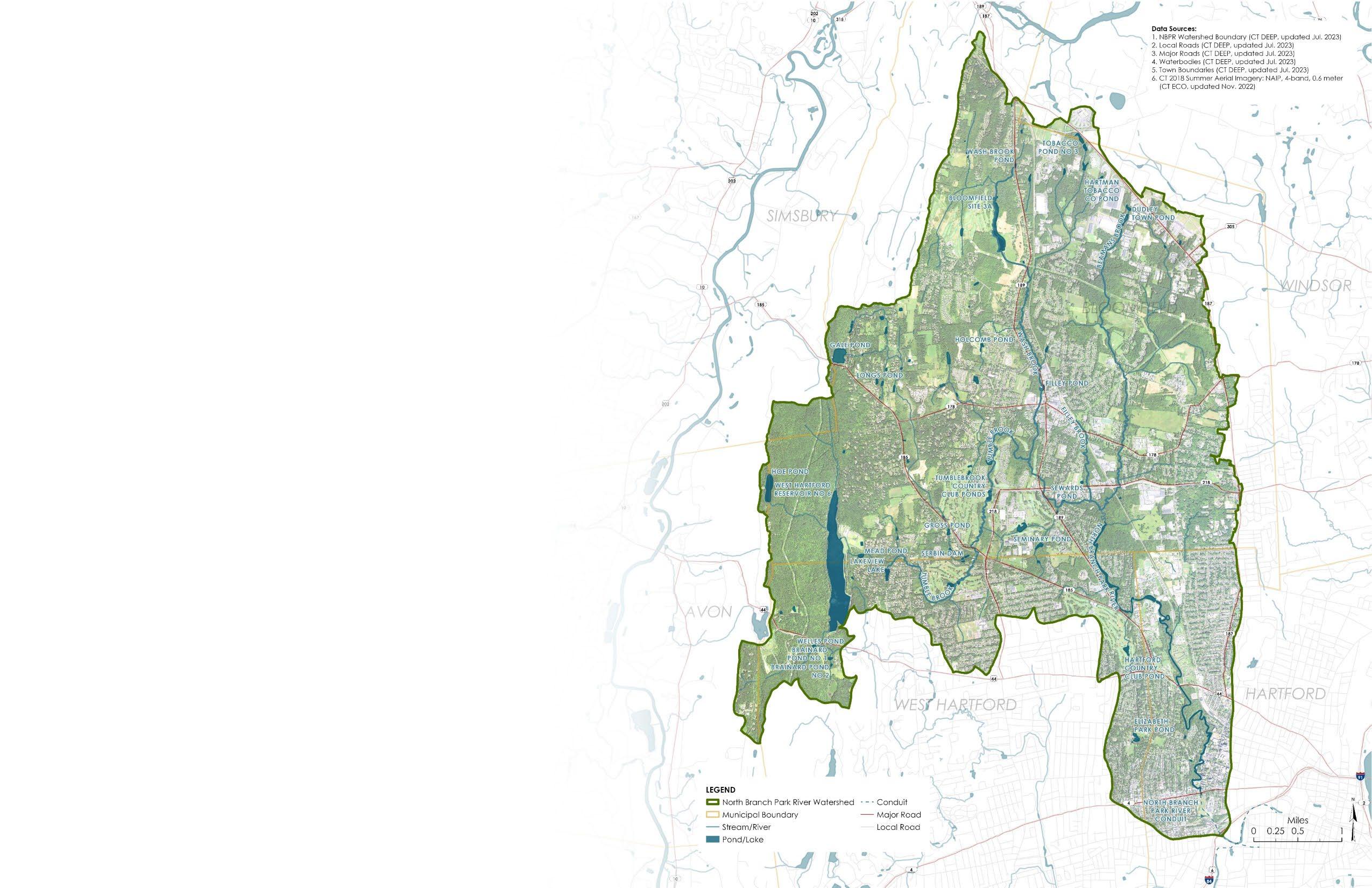
28.6 SQUARE MILES
TOTAL WATERSHED AREA
14 SUBWATERSHEDS
4 MAJOR TRIBUTARIES
5.4 MILES NORTH BRANCH MAINSTEM (ABOVE GROUND)
0.5 MILES NORTH BRANCH MAINSTEM (BURIED)

North Branch Park River Watershed
Water Quality – Impaired Urban River
• Recreation, Habitat for Fish, Other Aquatic Life and Wildlife
• Elevated Fecal Indicator Bacteria
− Stormwater runoff
− Combined sewer overflows
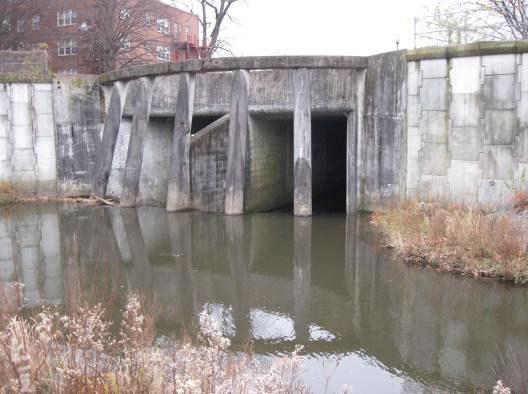
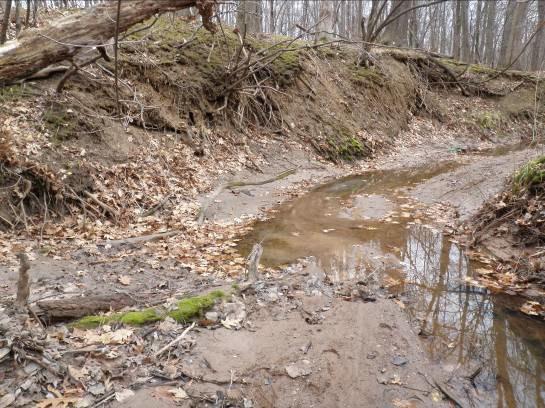
• Channelization, erosion & sediment deposition
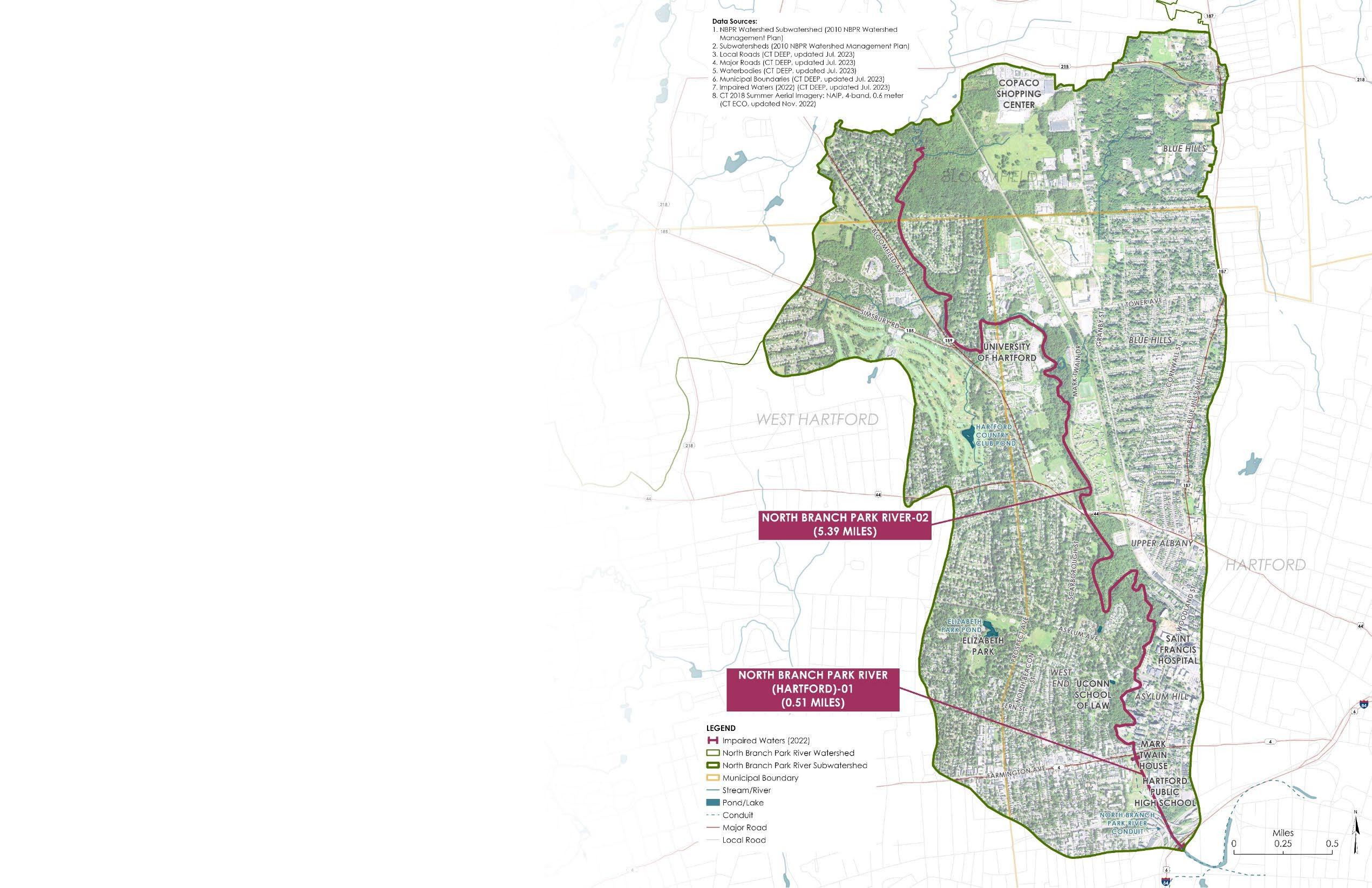
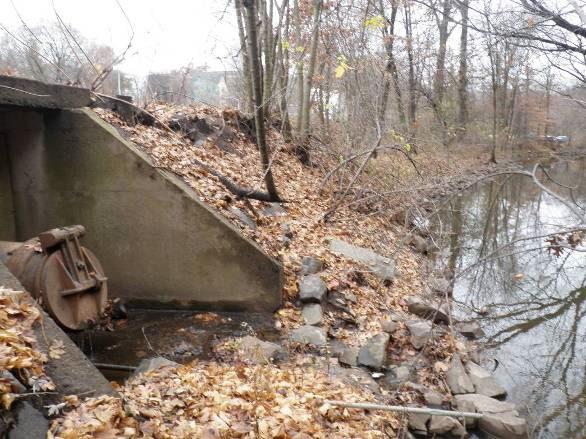

• Broad variability in stream conditions
• Healthy riparian corridor improves in-stream conditions (Goodwins Wild)
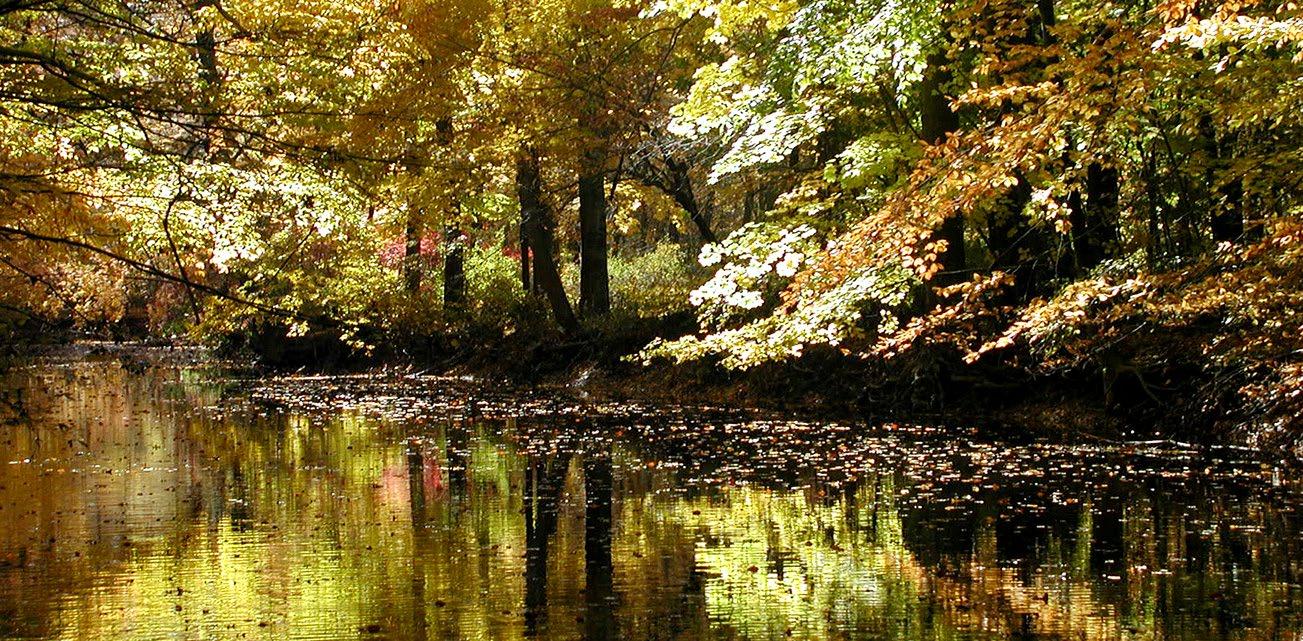
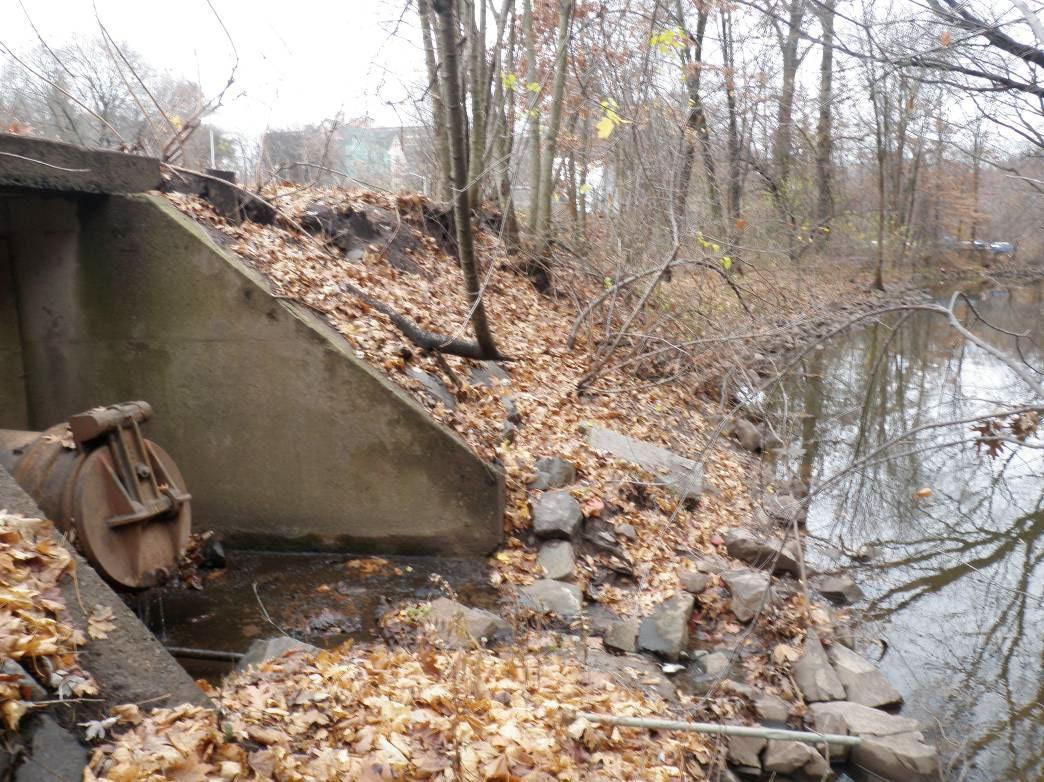
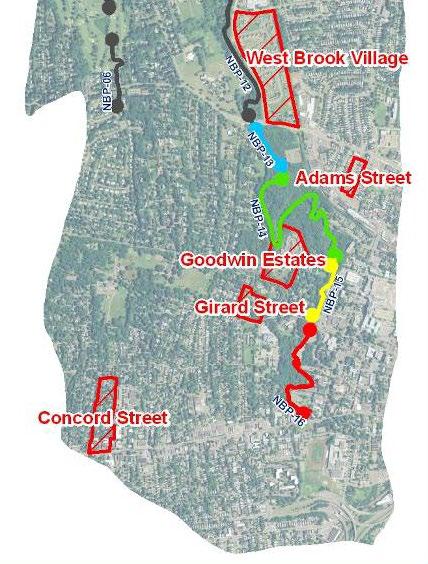
• Chronic flooding
• River disconnected from the community
• Development of floodplain and riparian zone
• Development potential in upper watershed
• Climate change impacts
• High social vulnerability
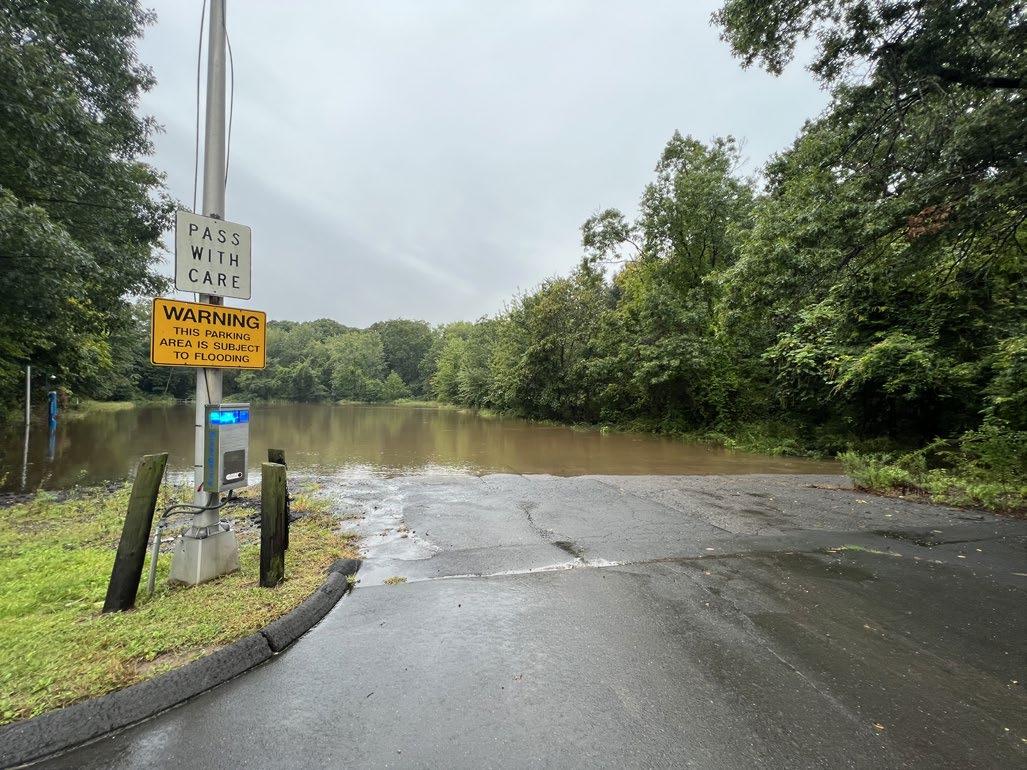
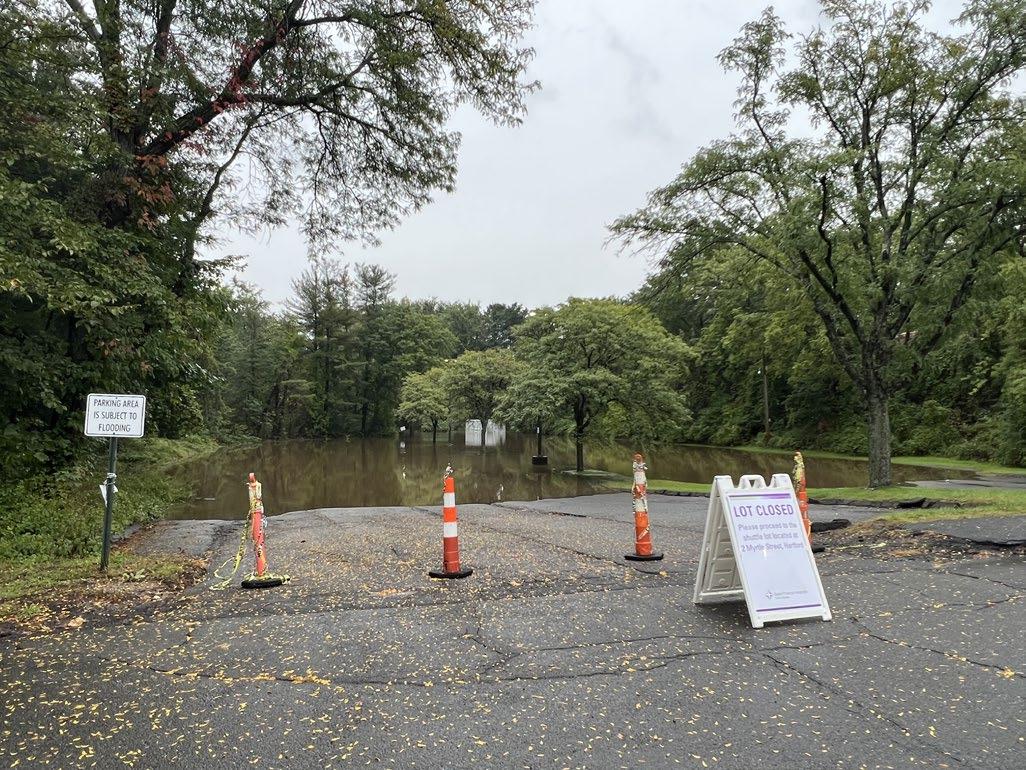
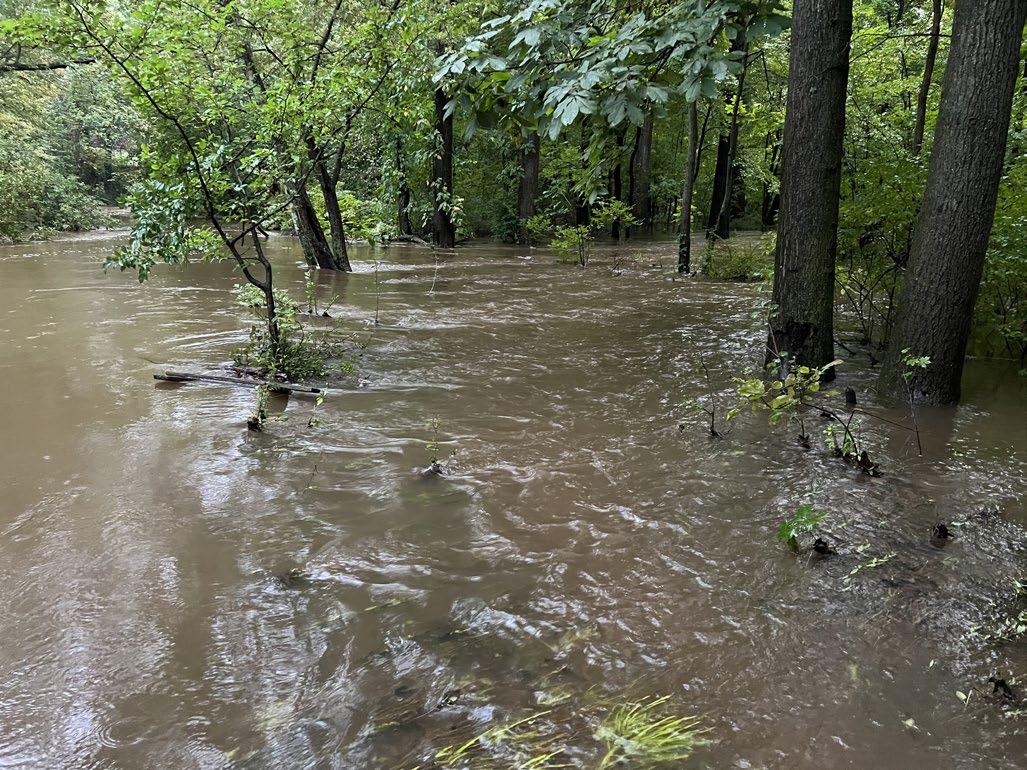
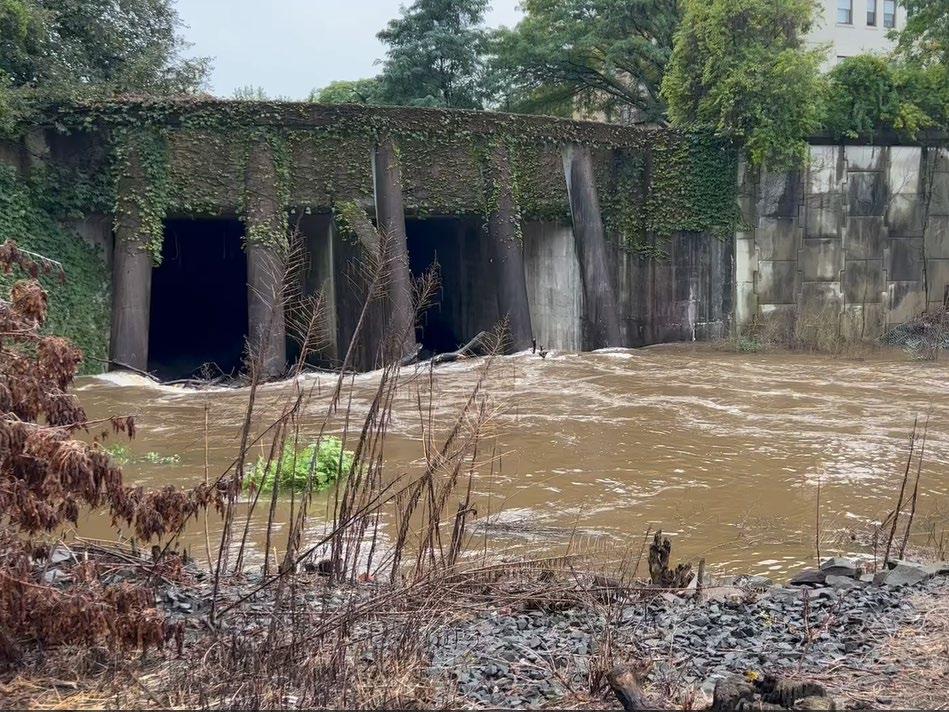
• Landscape scale green infrastructure that improves water quality
• Scenic riparian landscape offering healthy neighborhood amenities
• Increased ecosystem connectivity benefiting migratory and recreational paths
• Shared regional natural resource, a focus of urban/suburban collaboration
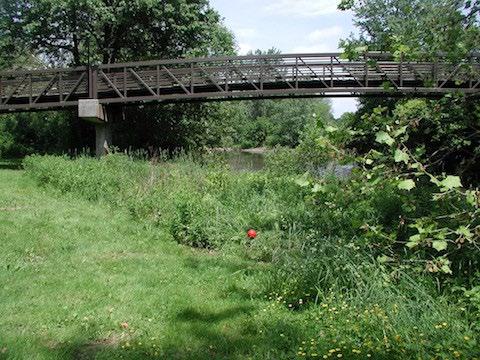
floodplain parkland vs parking lots
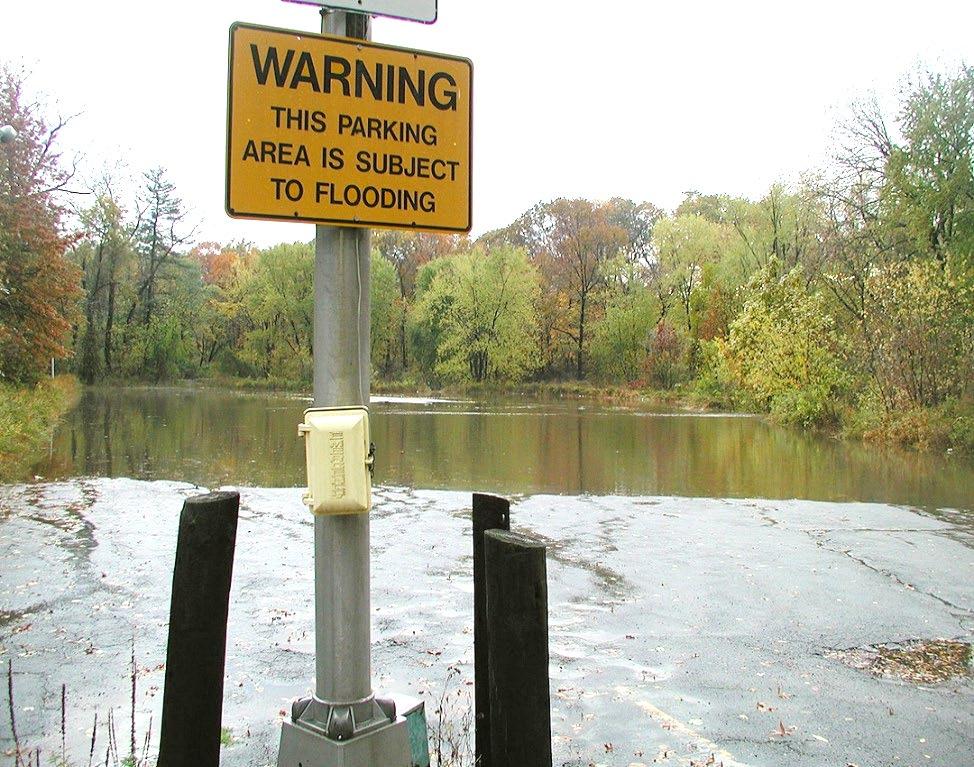
• 1857 Central Park
778 acres
New York City
• 1880 Emerald Necklace
1,100 acres
Boston
• 1871 recommendation letter to Charles Pond North Branch, Hartford

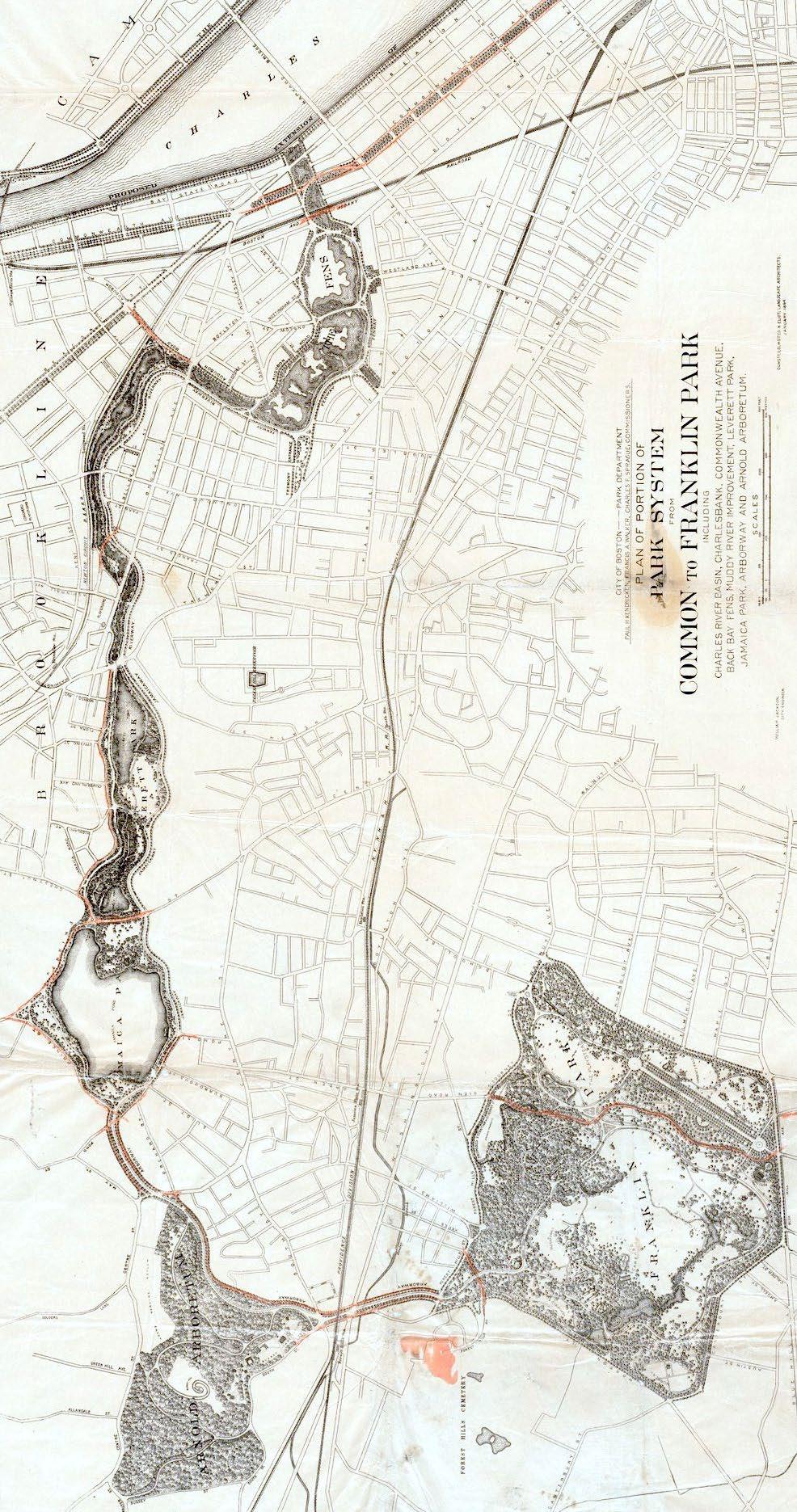
Central Park Emerald Necklace
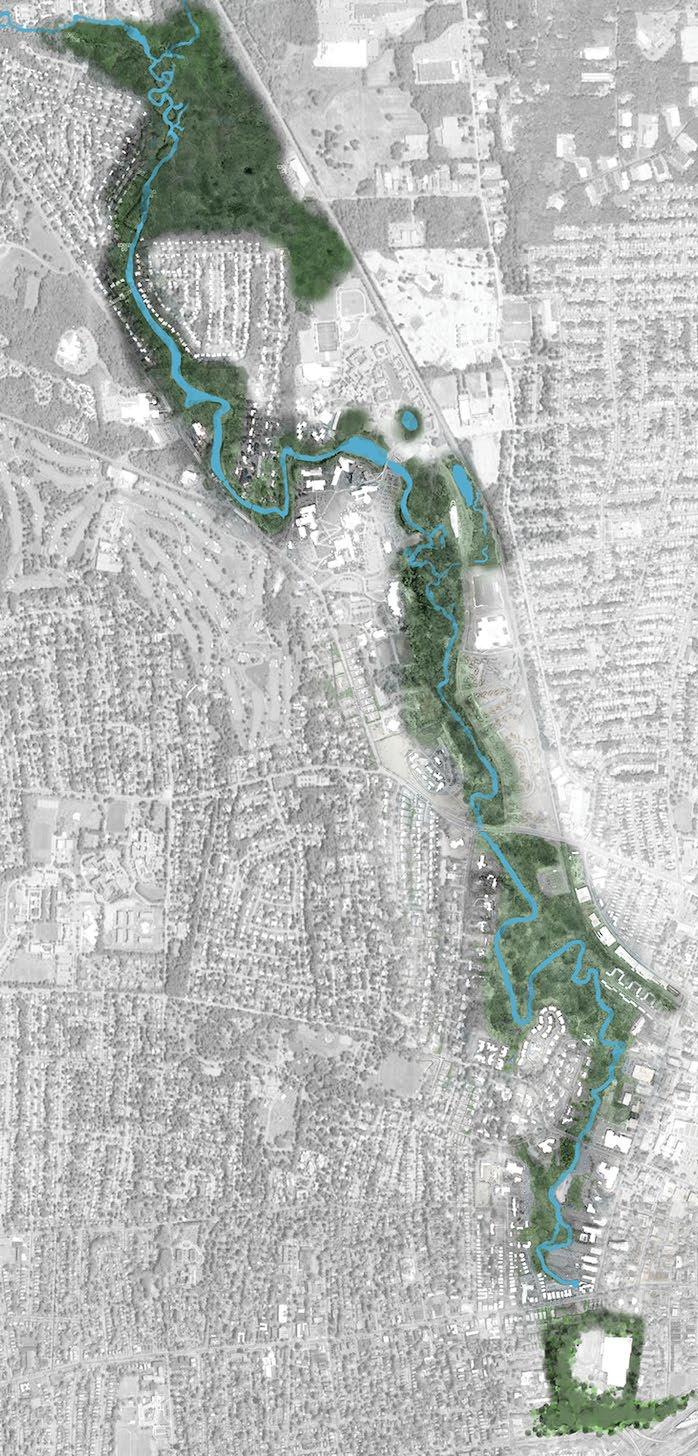
North Branch
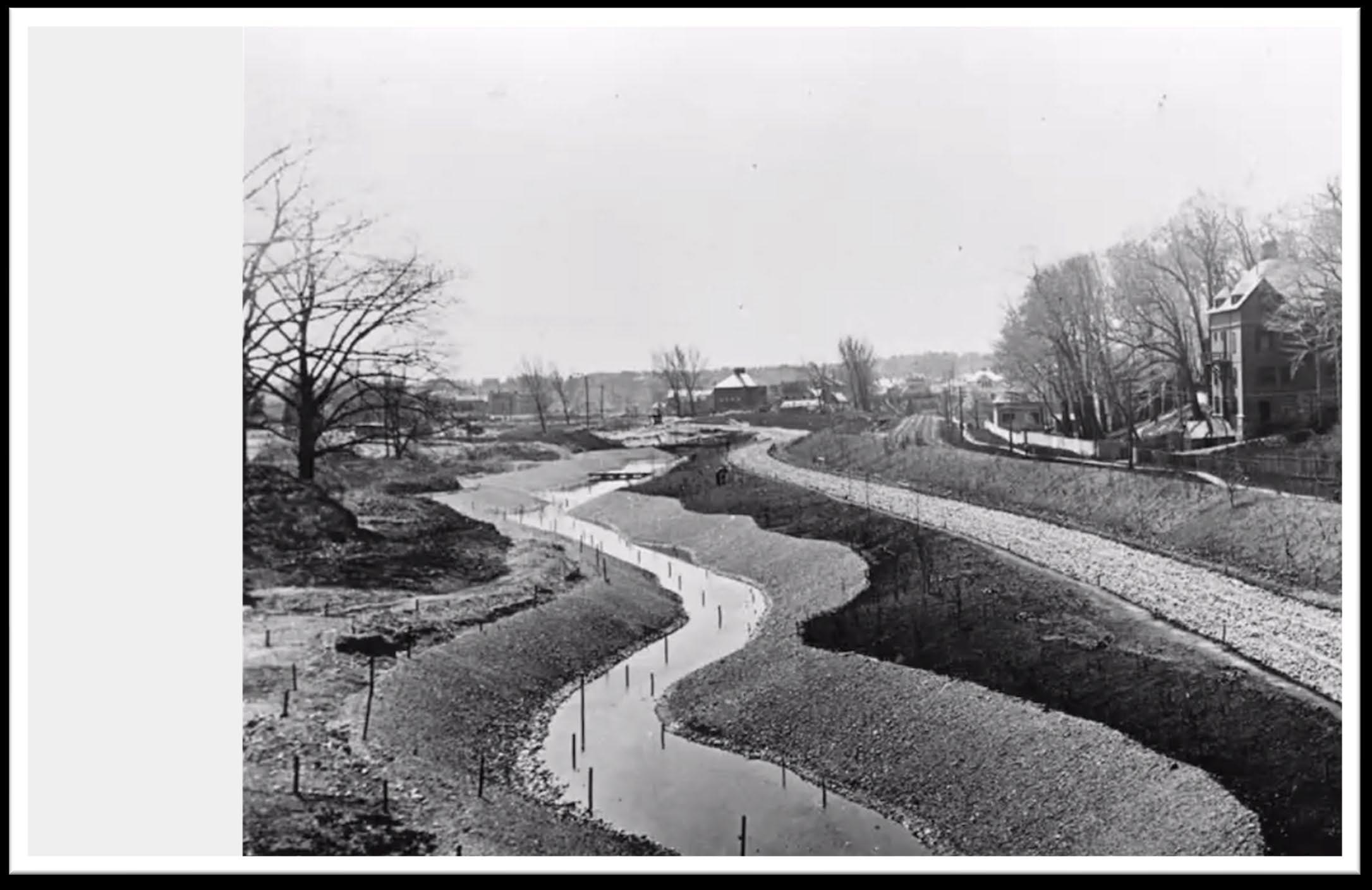
During construction
Muddy River 1892
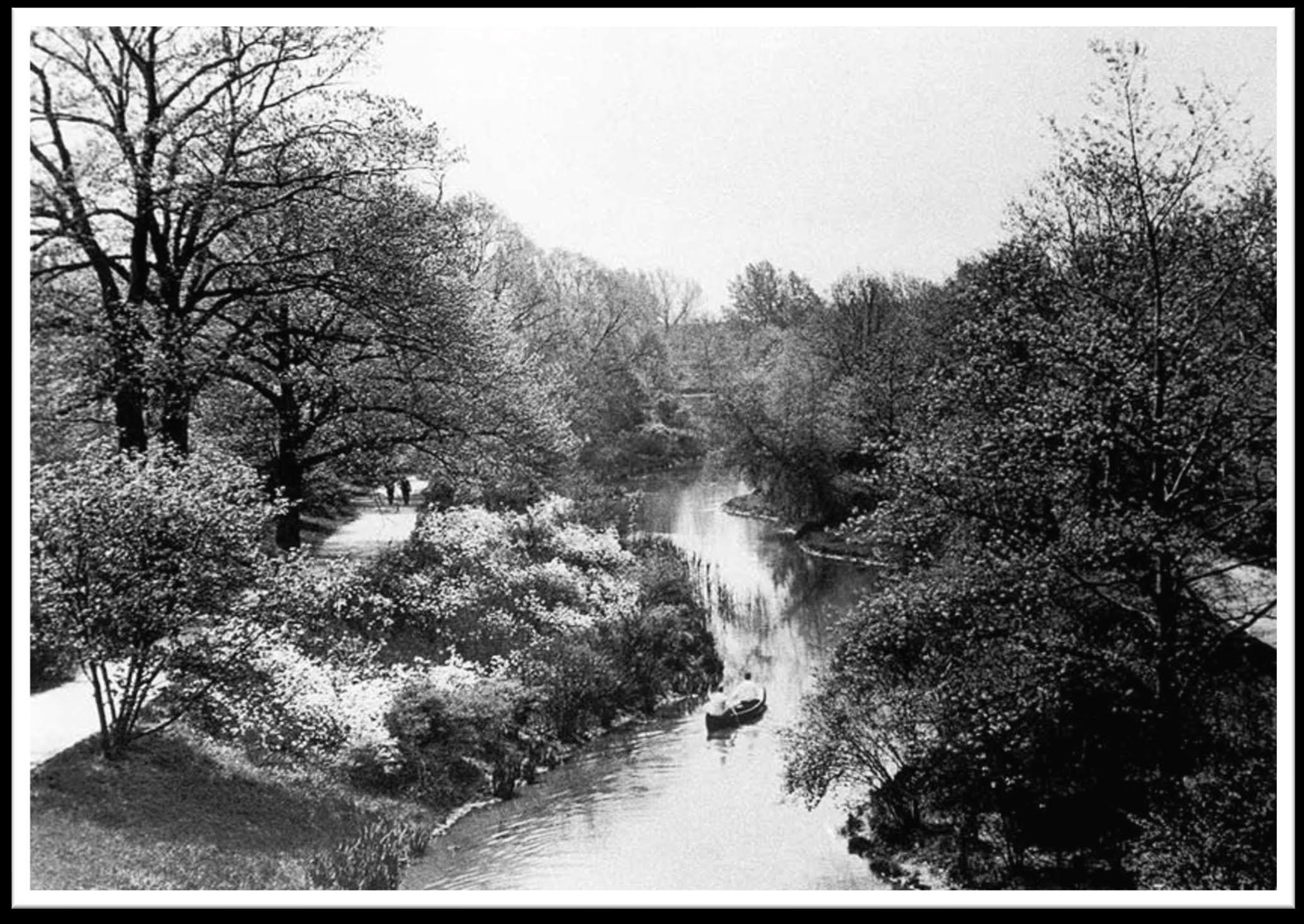 Muddy River 1920 as the Emerald Necklace
Muddy River 1920 as the Emerald Necklace
River Restoration
• Targeted dredging of choke points (flooding)
• Bank stabilization and plantings
• Habitat improvements
• Historic landscape rehabilitation
• Stream daylighting
• Stormwater improvements & GSI
• Tree stewardship
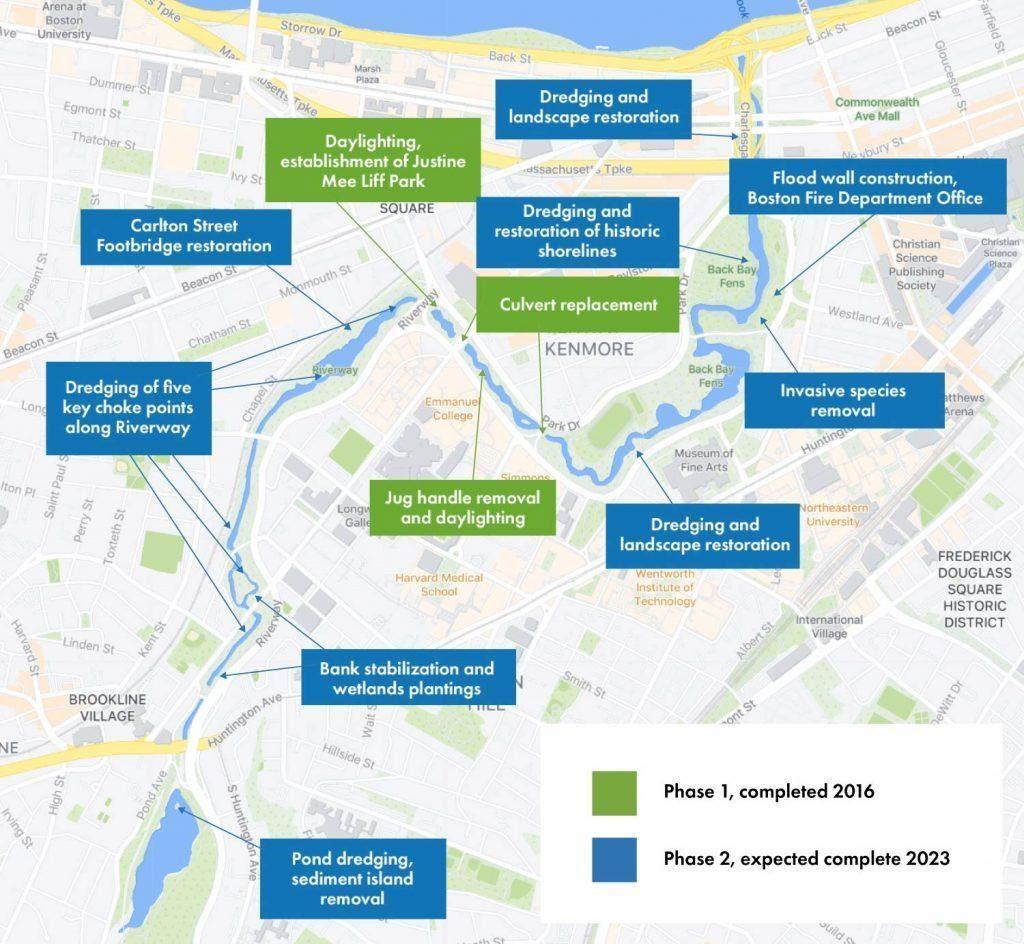

• CTDEEP Funded Planning Project
• Steering Committee, Field Assessments, Land Use Regulatory Review, Project Concepts, Public Outreach, Project Website
• Lower Watershed – Restoration Focus
• Upper Watershed – Protection Focus
https://portal.ct.gov/-
/media/DEEP/water/watershed_management/wm_plans/nbparkr/ nbprwbppdf.pdf




• MDC
− North Branch Park River Drainage Study & Sewer Separation Design (Granby Street and Blue Hills)
− New North Branch Interceptor Replacement along lower NBPR
• City of Hartford
− Granby Street Green Infrastructure Demonstration Project (with EPA)
• Capital Region Council of Governments
− Regional Stormwater Authority Feasibility Assessment (CT DEEP Grant)
− Natural Hazard Mitigation & Climate Adaptation Plan
− Climate Pollution Reduction Plan
• CTDEEP
− Creating new Office of Planning & Resilience (October 2024)
− Climate Resilience Fund Grant Program

• Focused update of 2010 plan
• Updated watershed conditions
• Green infrastructure designs focused in lower watershed
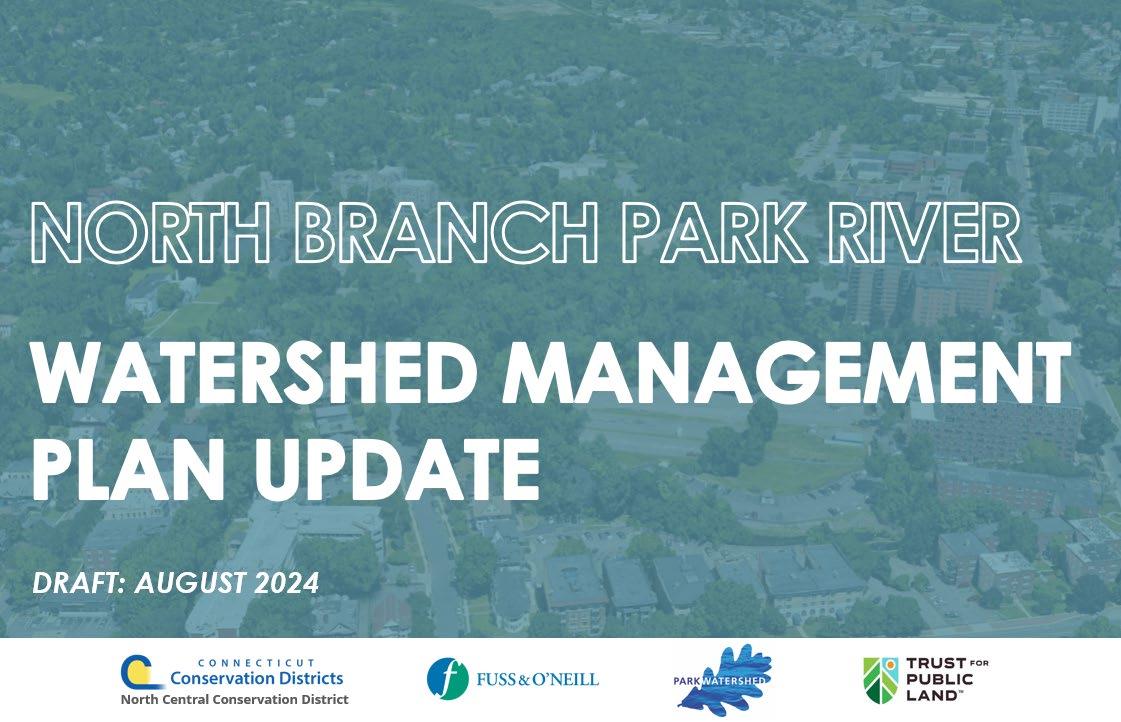

• Watershed-wide policy & nonstructural recommendations
• Consideration of climate resilience
• Roadmap for next 10+ years


• Community input from residents, municipalities, businesses, etc.
− Water quality and related issues that should be addressed in the watershed plan update and desires/aspirations for the NBPR and its watershed
• Watershed survey
− https://forms.gle/f27qzM5q9UnWW8YN9
What are the most important issues that should be addressed in the 2024 North Branch Park River Watershed Management Plan Update?
2. What is the big picture vision?
What are outcomes you would most like to see in the 2024 Plan Update?
3. How can you or your organization support this process?
Provide information about your neighborhood/property, host an event, send us photos, share the survey with your network, etc.
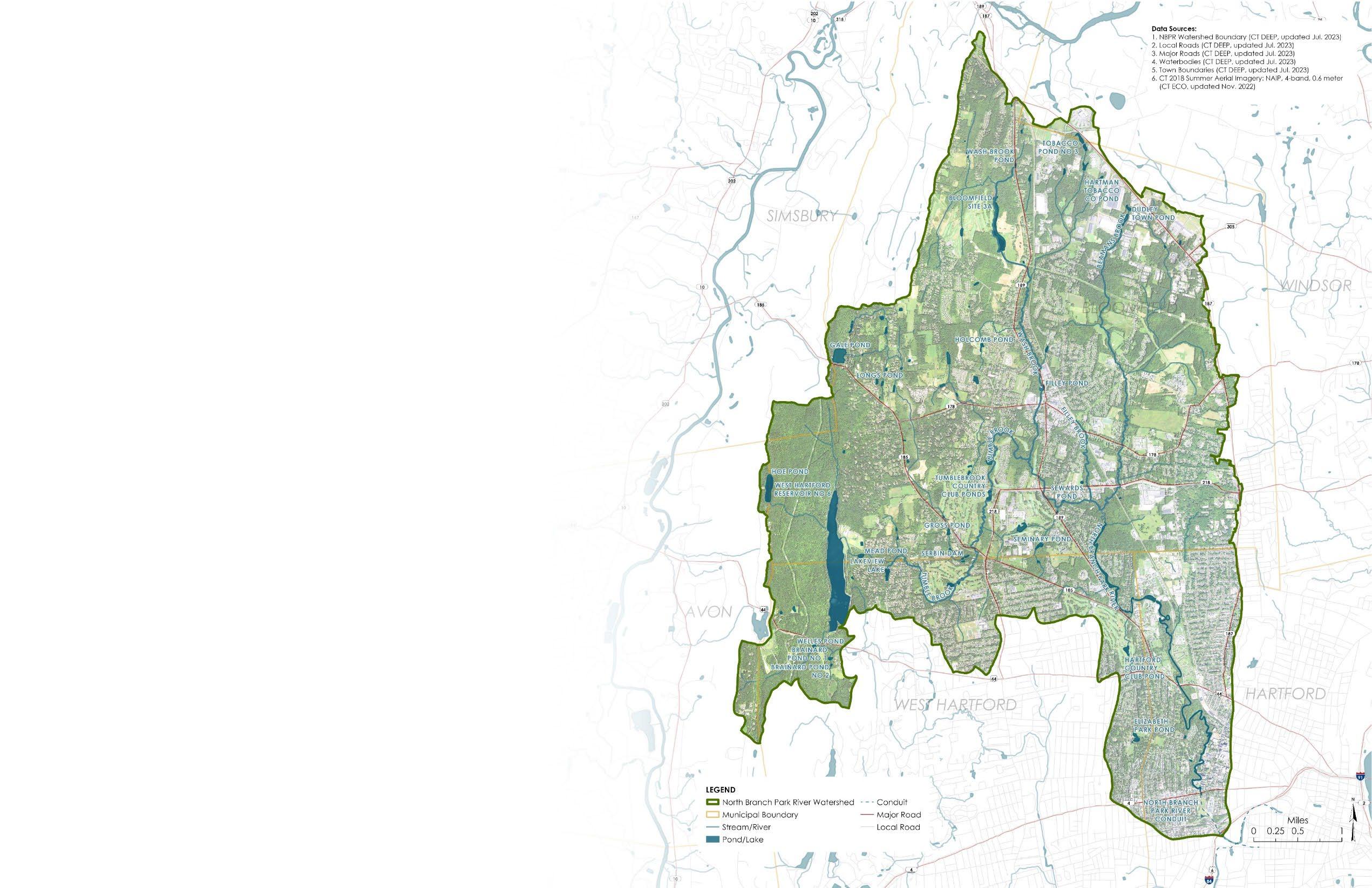
1. Implementation Coordinator ?
What organization is responsible for implementation of the North Branch Park River Watershed Management Plan?
2. Nonprofit Stewardship ?
Park Watershed, a 501c3 established in 2012 for the entire 78 sq-mile Park River regional watershed, is an all-volunteer organization that depends upon partnerships.
3. What are the funding options?
Could watershed-specific stormwater utilities support green infrastructure? How would funds be distributed?
4. Other organizational support?
What are the roles of other nonprofit organizations and governmental agencies, and property owners?
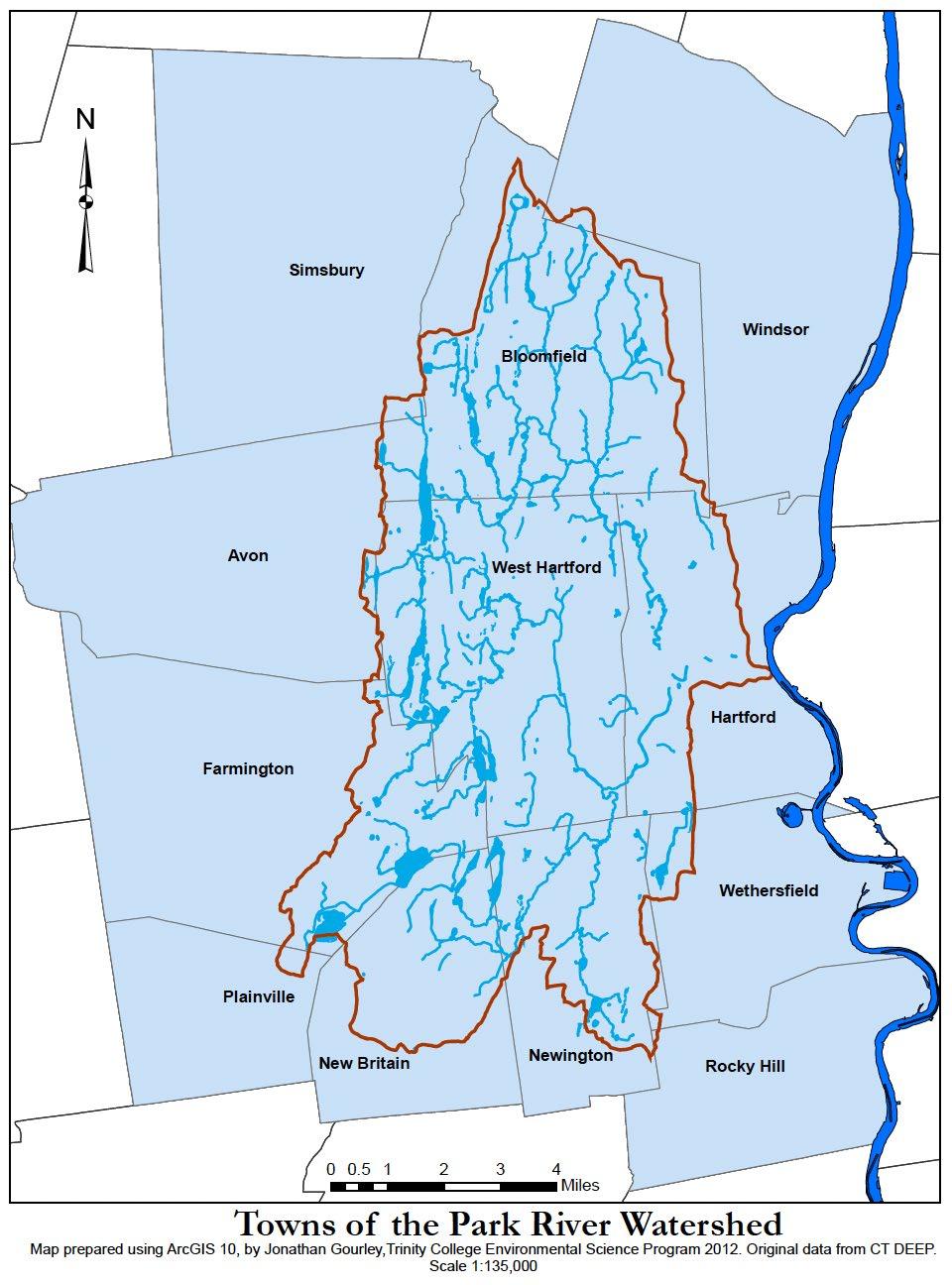
• Develop designs for impactful green infrastructure projects
• Build on 2010 concepts and other ongoing/planned projects
• Reduce pollutant loads and runoff volumes
− Bacteria, nutrients, sediment
• Secondary benefits
− CSO reduction, flood resilience, community amenities
“Scale green infrastructure. Providing an alternative to separating the combined sewer system will preserve property values, protect agriculture and landscape, and ensure cleaner water.”
“Implement the North Branch Watershed Management Plan. Implementing this plan will improve riparian health of the North Branch and Gully Brook sub-basin in an area adjacent to the North Hartford Promise Zone.”
Hartford City Plan 2035

Project Selection and Concept Phases
1. Data Gathering & Review
• Compile GIS mapping
• Inventory public and institutional properties
• Identify existing GI
• Identify planned capital improvements
2. Project Screening & Selection
• Desktop screening
• Property owner interviews
• Field inventories (20 to 40 sites)
• Green infrastructure concepts (up to 15)
• Technical Memo
3. Preliminary Design
• 5 projects
• Preliminary layout
• Opinion of cost
• Technical Memo
3. Permit Level Design
• 3 projects
• Field survey
• Test pits & infiltration testing
• Wetland delineation
• Level of detail to support local/state permitting
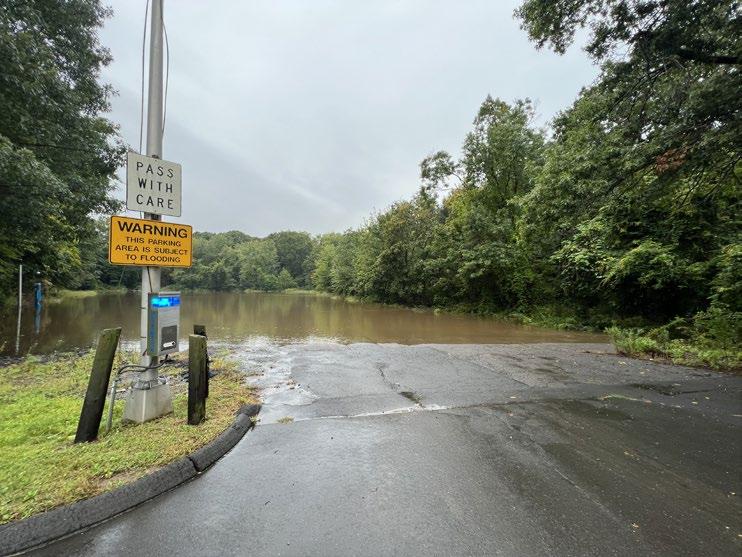
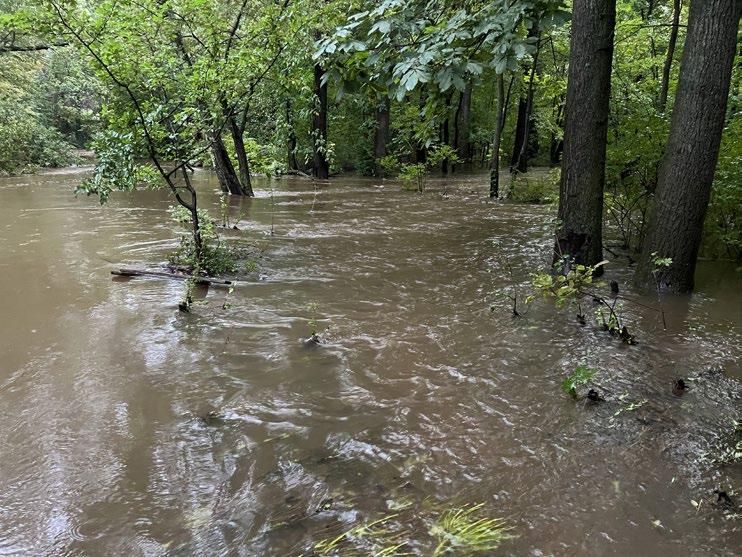
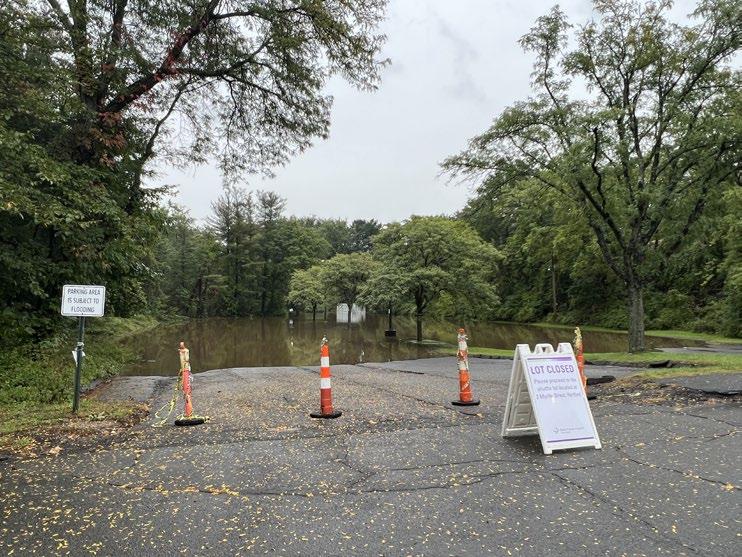

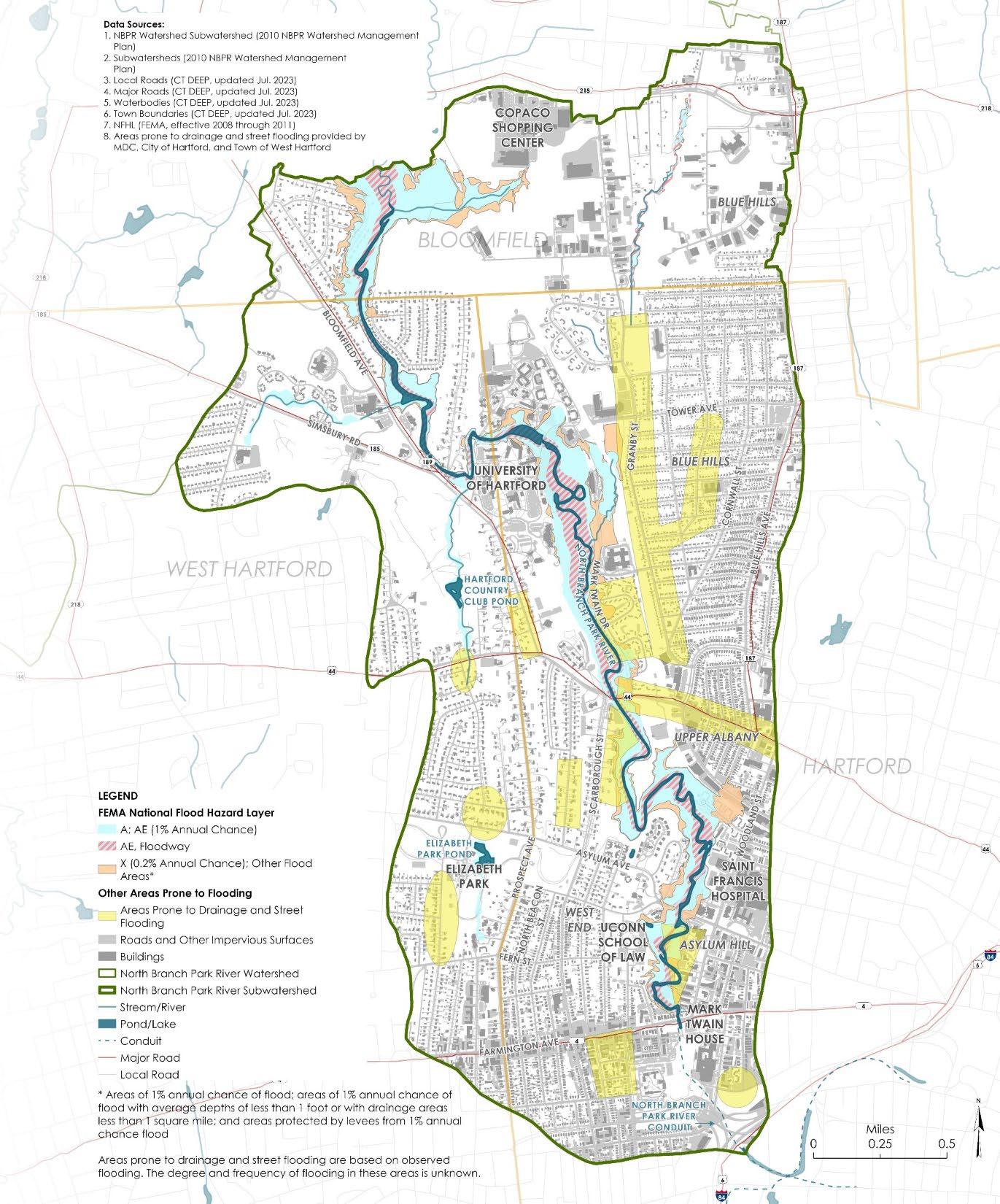
Stormwater Infrastructure (GSI)
• Public/institutional properties
• Within municipal right-of-way
• At existing outfalls
• Site, neighborhood, landscape scale
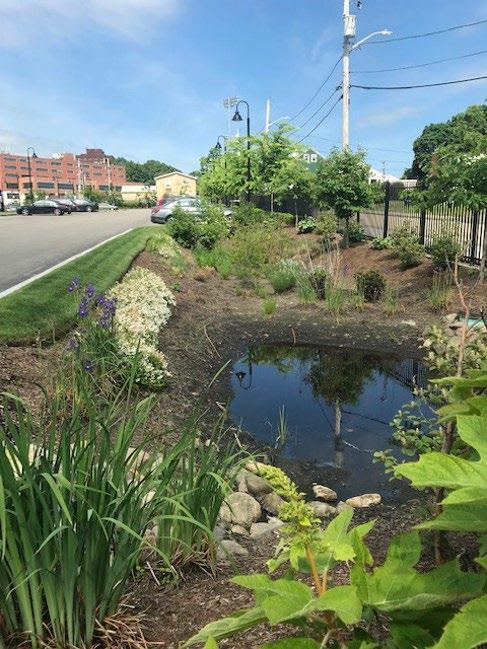
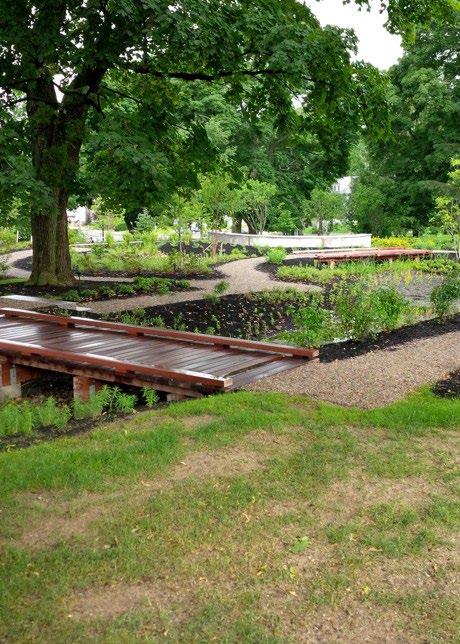
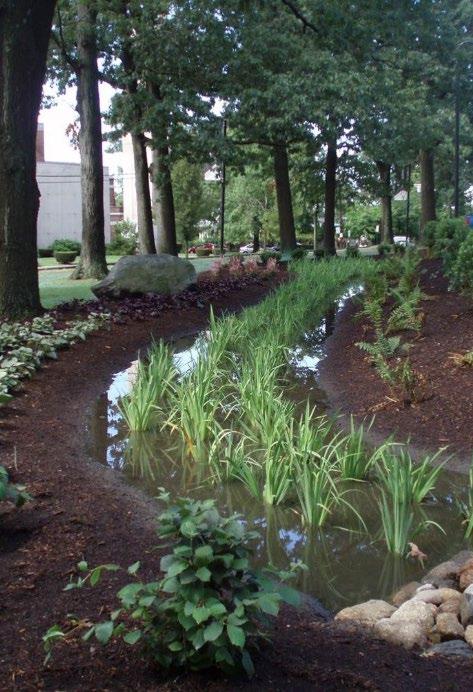
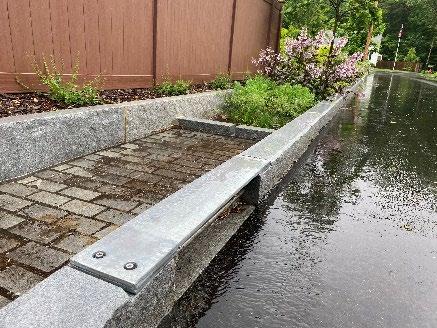
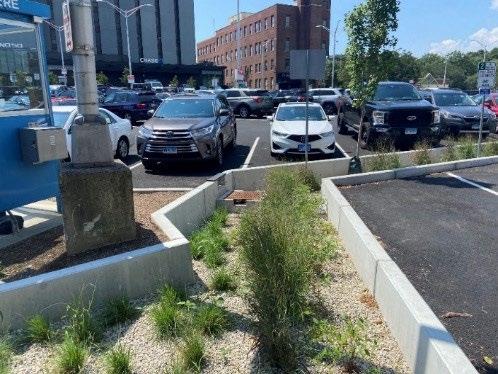

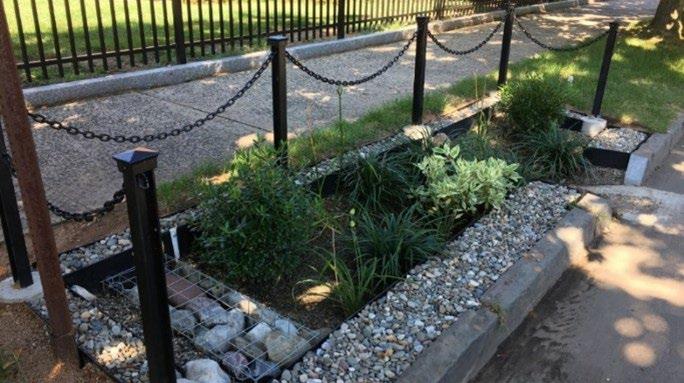
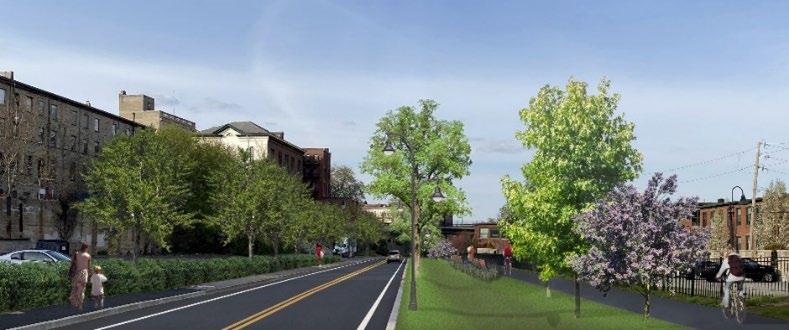 Infiltration basins
Bioretention systems
Bioretention Planters
Parking Lot Bioretention
Bioretention & Walking Trails Rain Gardens
Roadside Bioswales Green Streets
Infiltration basins
Bioretention systems
Bioretention Planters
Parking Lot Bioretention
Bioretention & Walking Trails Rain Gardens
Roadside Bioswales Green Streets
Other Designed & Natural Green Infrastructure Design Strategies
• Riparian & floodplain restoration
• Urban tree canopy
• Urban rewilding
• Land conservation
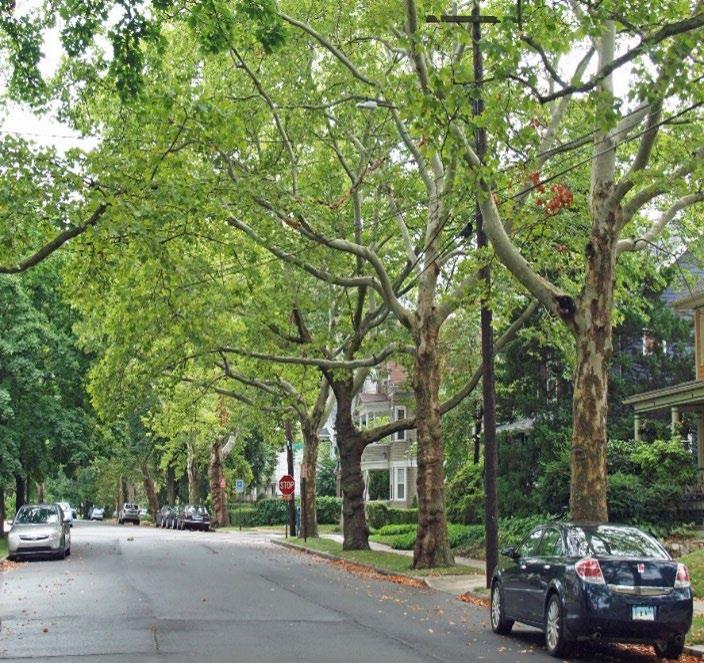
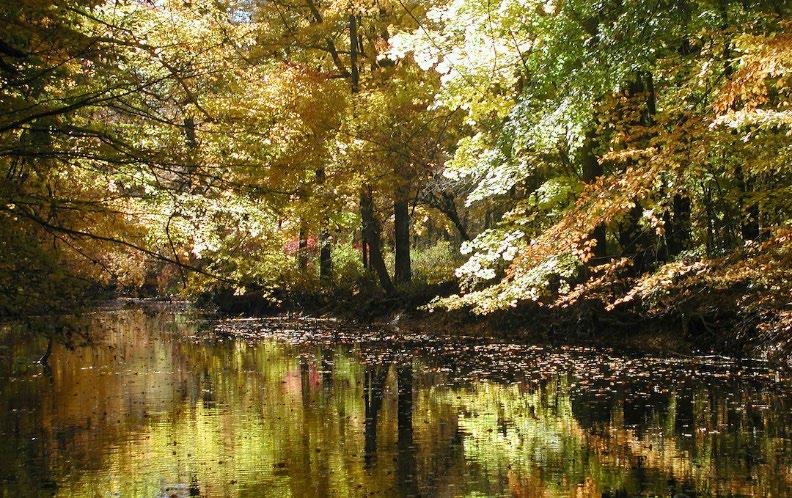
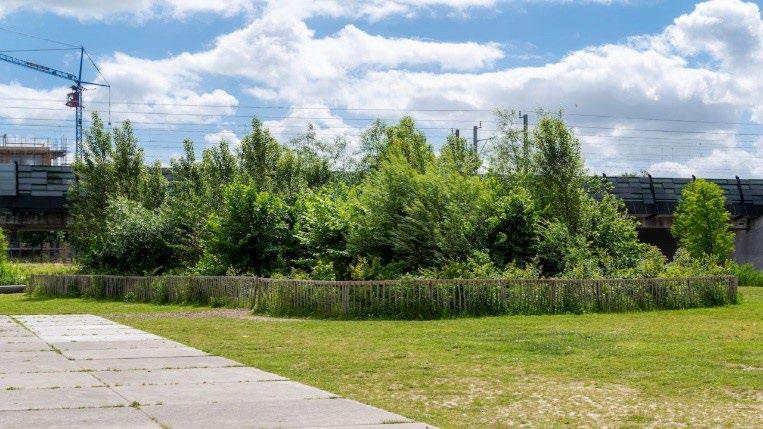
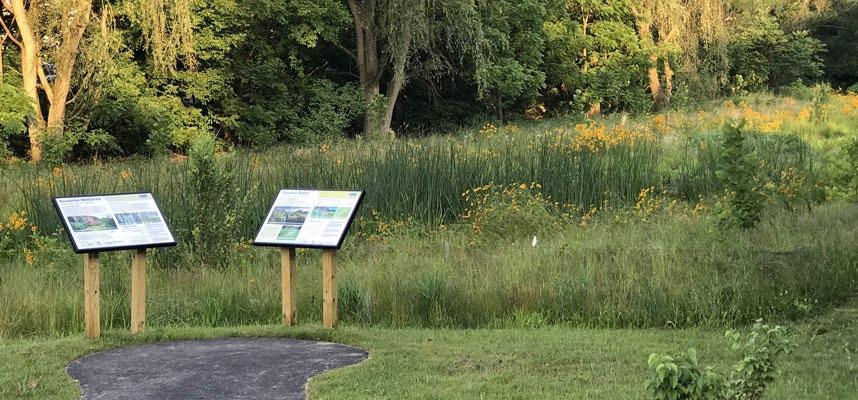
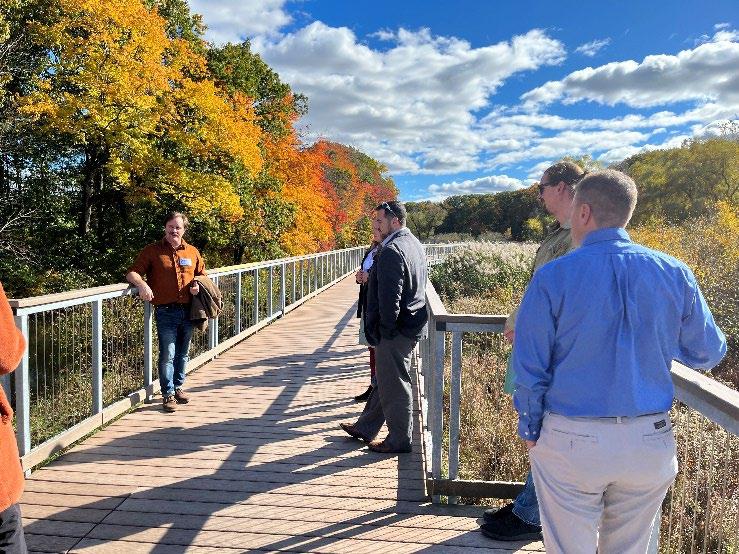 Urban Tree Canopy
Small Urban Forests & Urban Rewilding
Riparian & Floodplain Restoration Floodplain Park
Land Conservation – Goodwin’s Wild
Urban Tree Canopy
Small Urban Forests & Urban Rewilding
Riparian & Floodplain Restoration Floodplain Park
Land Conservation – Goodwin’s Wild
• Public & institutional properties, 98 potential parcels identified
• Green Stormwater Infrastructure (GSI)
− 0.5 acre or more of impervious area
− All soil types considered
• Riparian Corridor Green Infrastructure
− Parcels within 300-foot riparian corridor
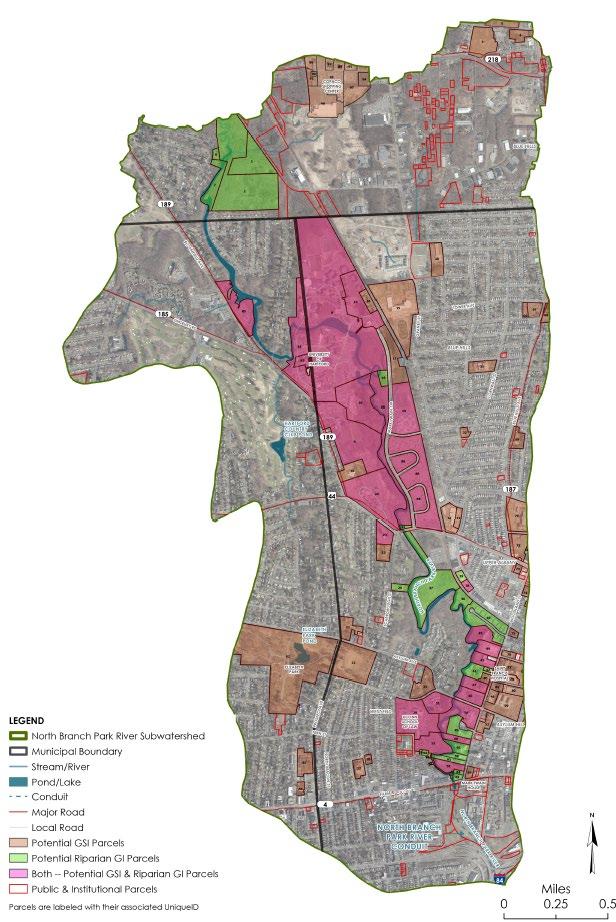
• Field inventories in December 2023

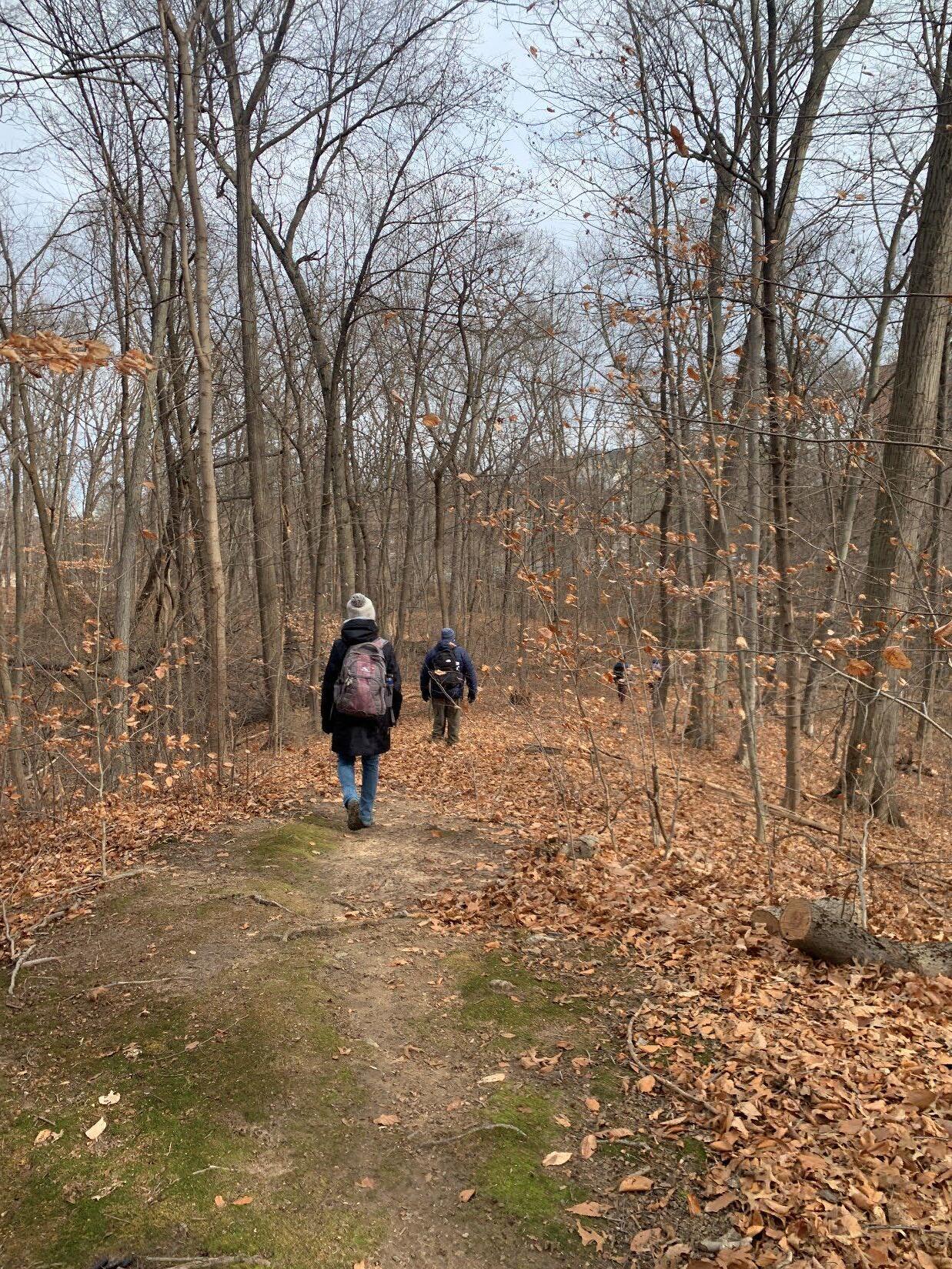
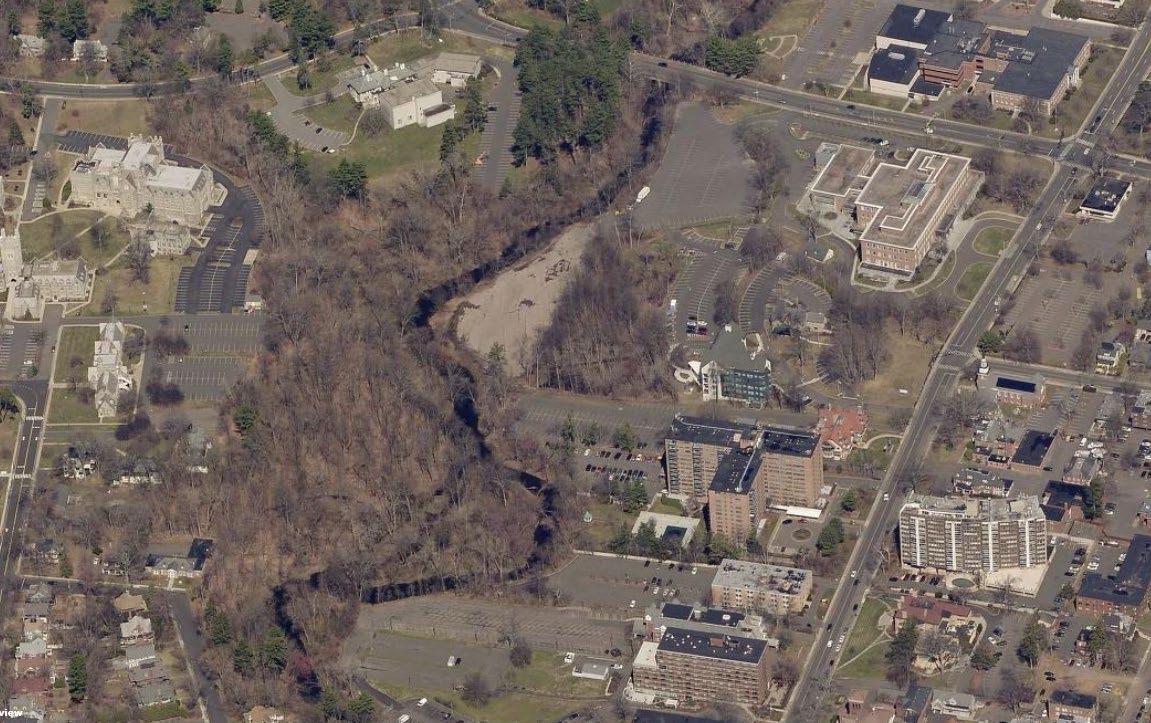
WOODED FLOODPLAIN AND RIPARIAN AREA WOODED FLOODPLAIN AND RIPARIAN AREA
PARKING LOTS IN FLOODPLAIN LOTS IN FLOODPLAIN
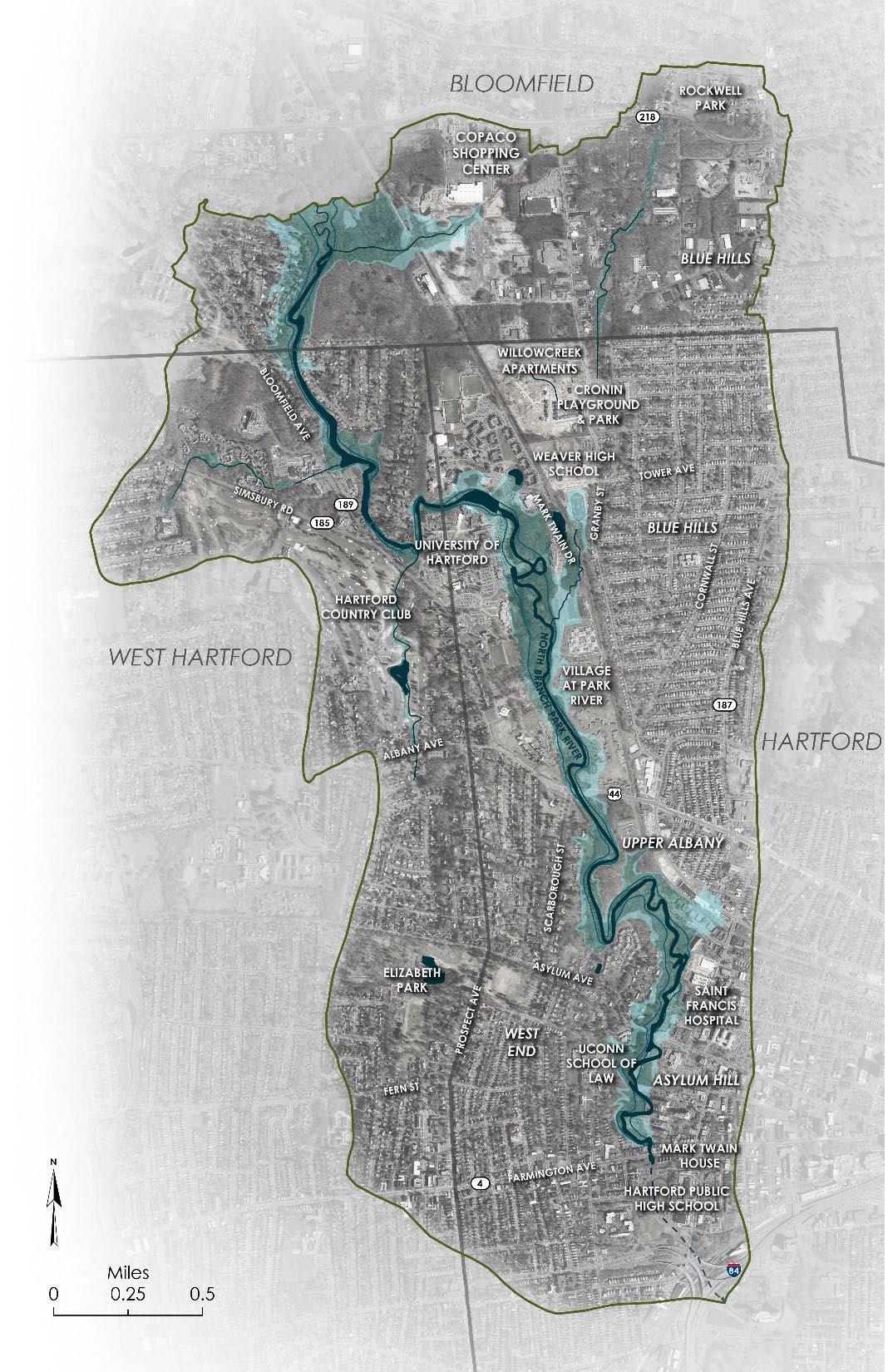
FEMA 100-YEAR FLOODPLAIN
FEMA 500-YEAR FLOODPLAIN

PARKING LOTS IN FLOODPLAIN LOTS IN FLOODPLAIN
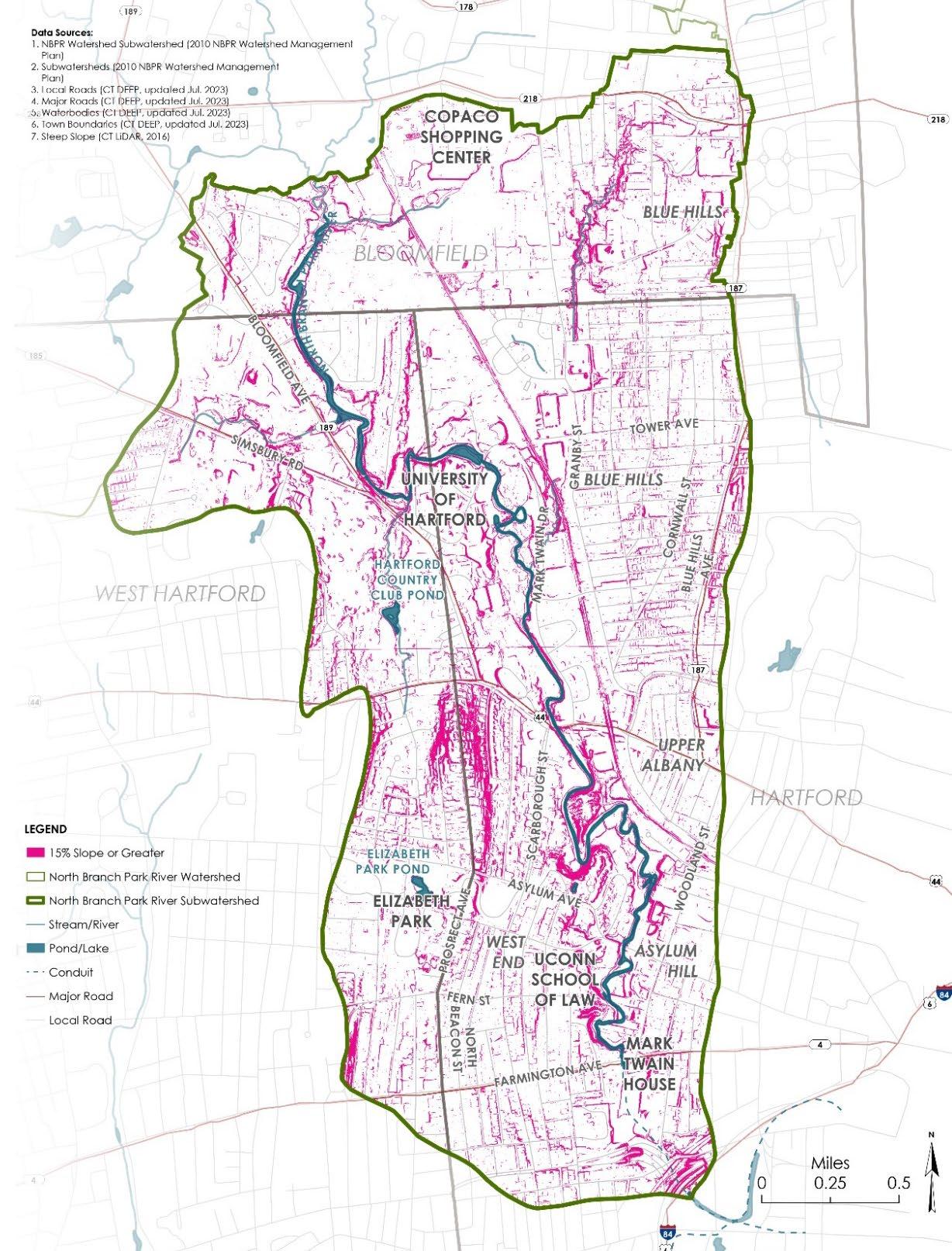 WOODED FLOODPLAIN AND RIPARIAN AREA
WOODED FLOODPLAIN AND RIPARIAN AREA
STEEP WOODED SLOPES
WOODED FLOODPLAIN AND RIPARIAN AREA
WOODED FLOODPLAIN AND RIPARIAN AREA
STEEP WOODED SLOPES
• Riparian & Floodplain Restoration
− Flood prone parking lots and development
− Wetland/meadow creation
• Land Conservation
− Riparian corridor, floodplain & wooded steep slopes
− Formal permanent protection
• Challenges
− Loss of parking, future development
− Need property owner cooperation
− Incentives to reduce impervious cover
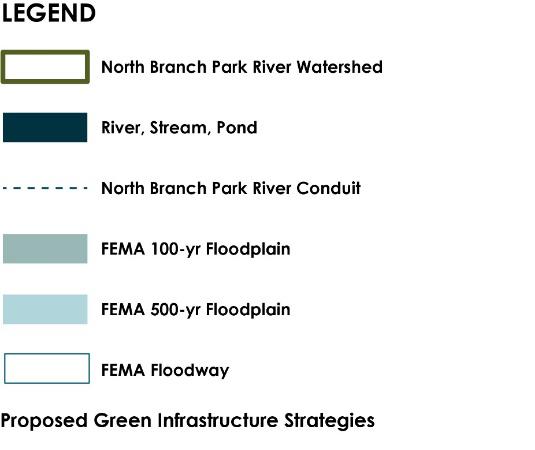


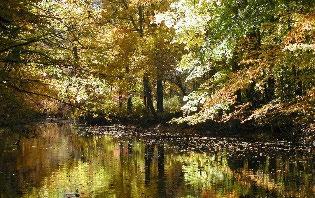
LAND CONSERVATION OF FLOODPLAIN, RIPARIAN CORRIDOR, AND WOODED STEEP SLOPES
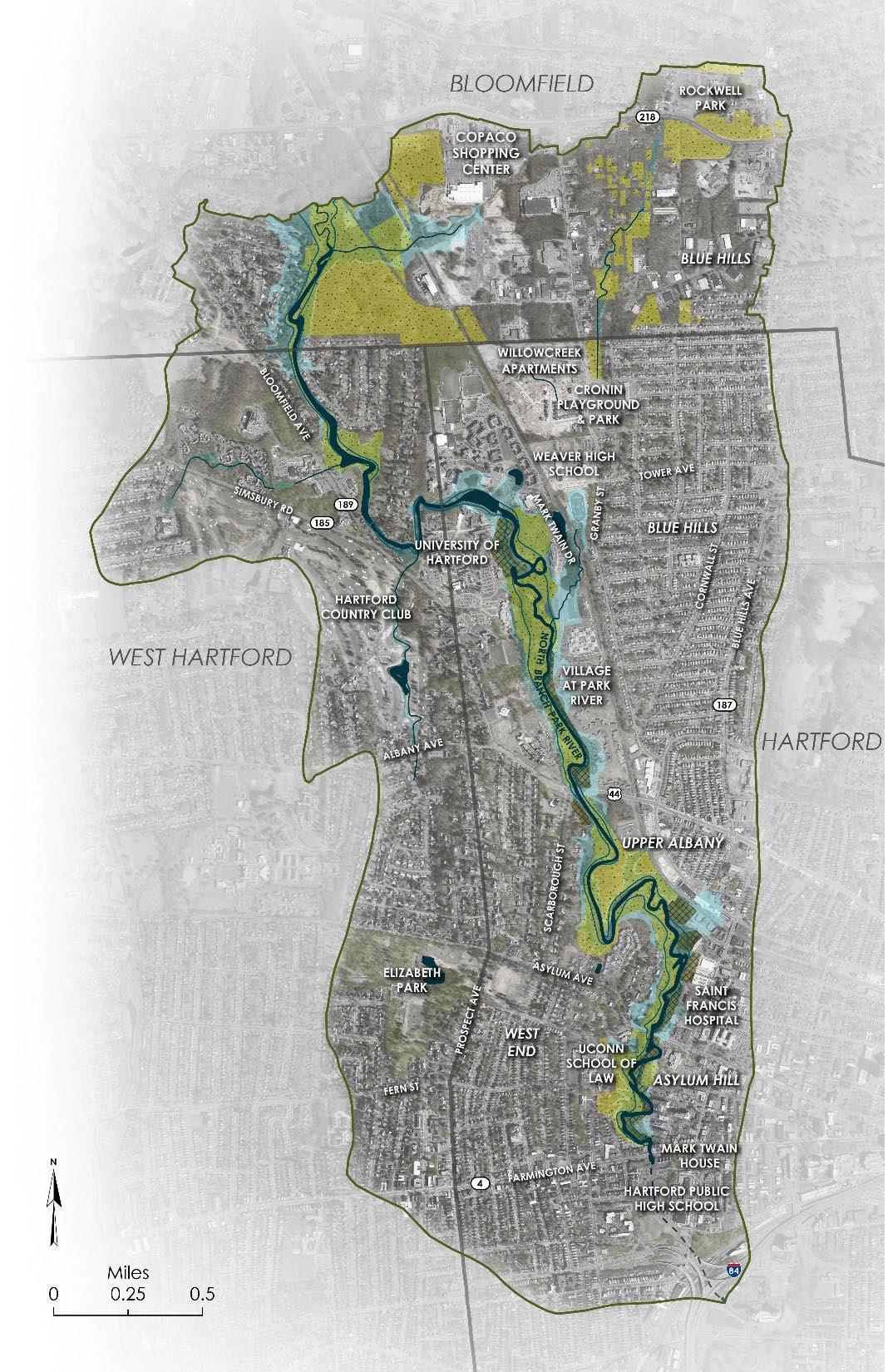
FLOODPLAIN
RIPARIAN/FLOODPLAIN
RESTORATION OF EXISTING PARKING LOTS
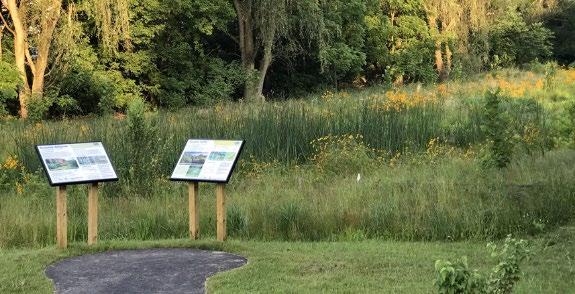
• Green Stormwater Infrastructure (GSI)
− Retrofit parking lots, roads (green streets), schoolyards
− Treat new separated storm drain discharges
− Subsurface stormwater storage and infiltration systems
• Challenges
− Need property owner cooperation
− Combined sewers
− Subsurface and soil conditions
− Incentives to reduce impervious cover
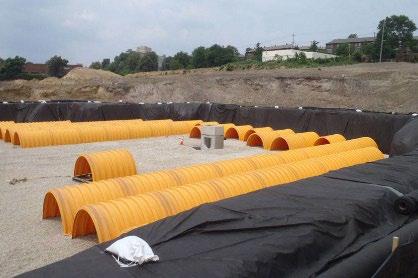
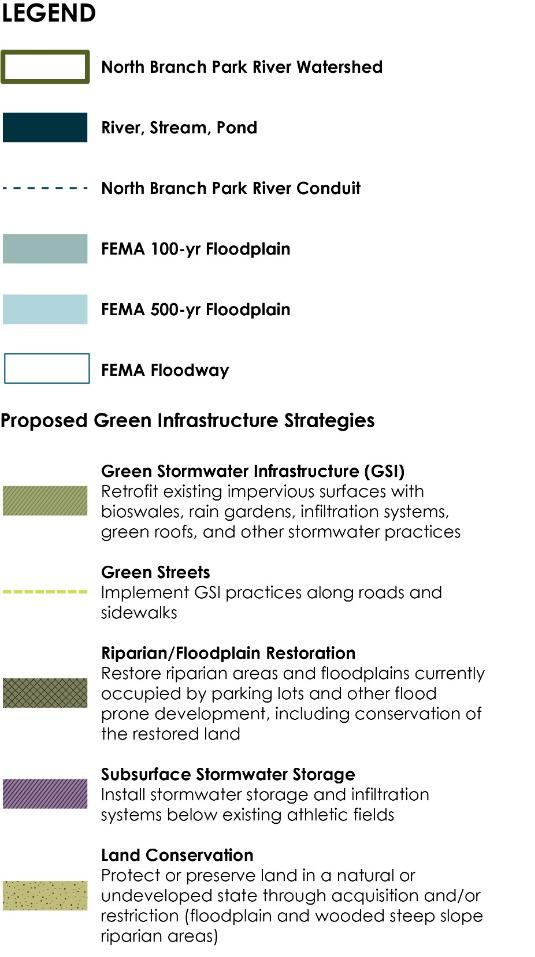
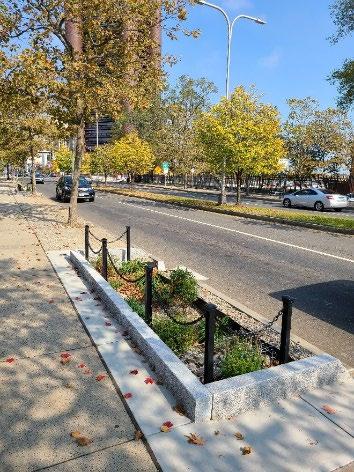
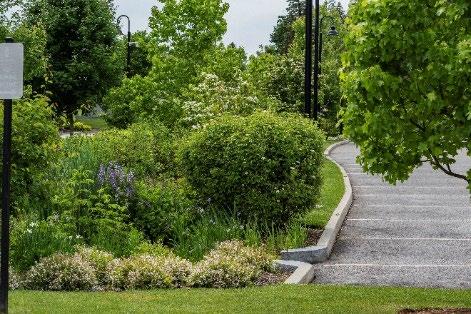
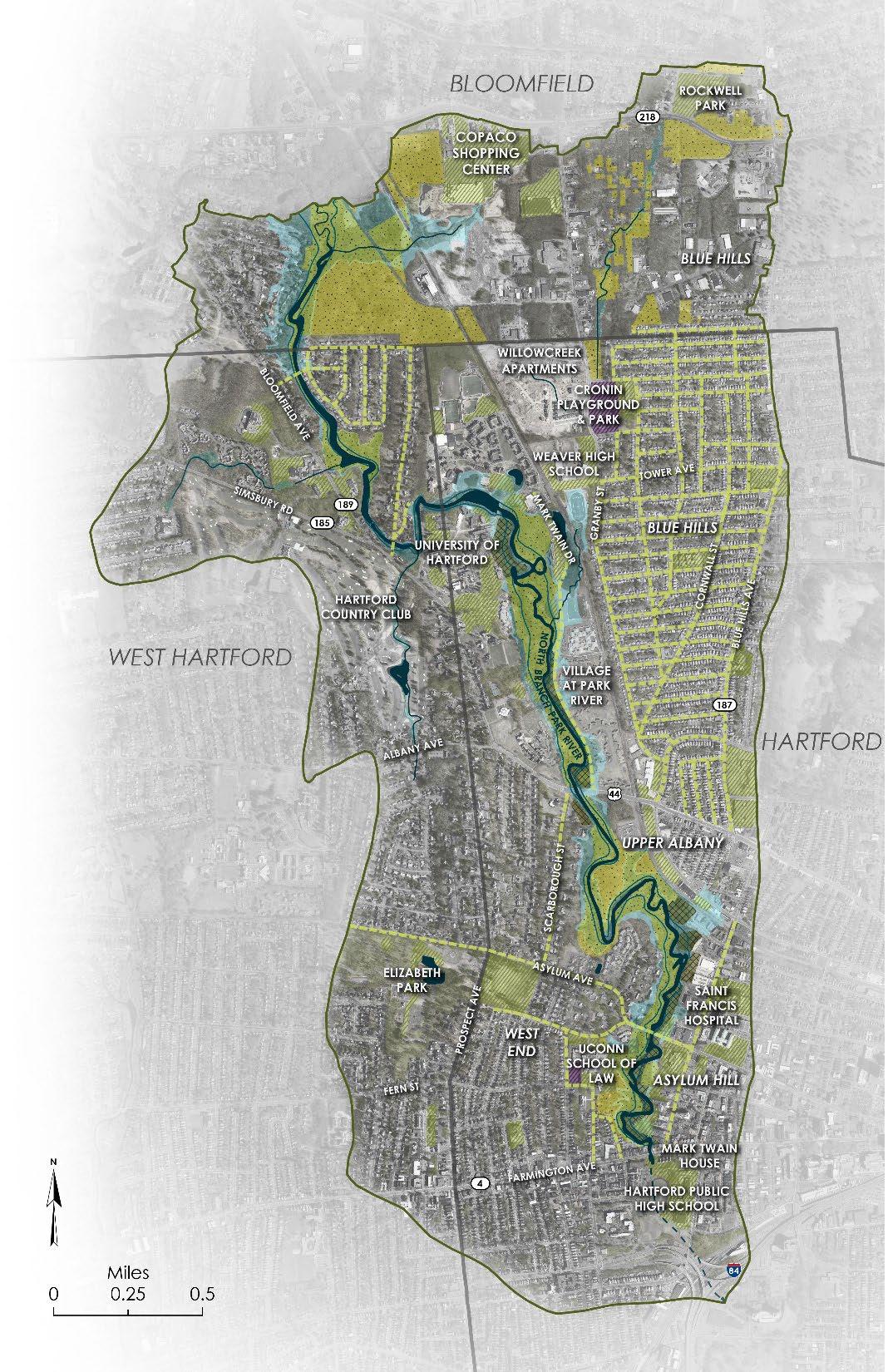
• Paths and Trails
− Walking paths within restored riparian/floodplain areas
− Connections to schools, institutions, and landscapes
− Connections to future Hartline MultiUse Trail
• River & Stream Crossings
− Potential replacement
− Flooding, erosion, water quality, recreational and wildlife passage
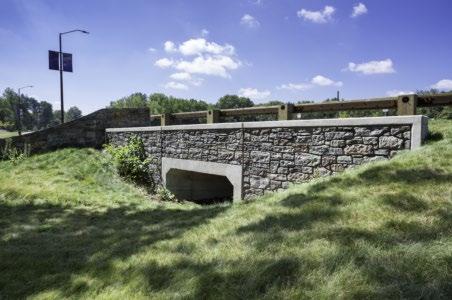
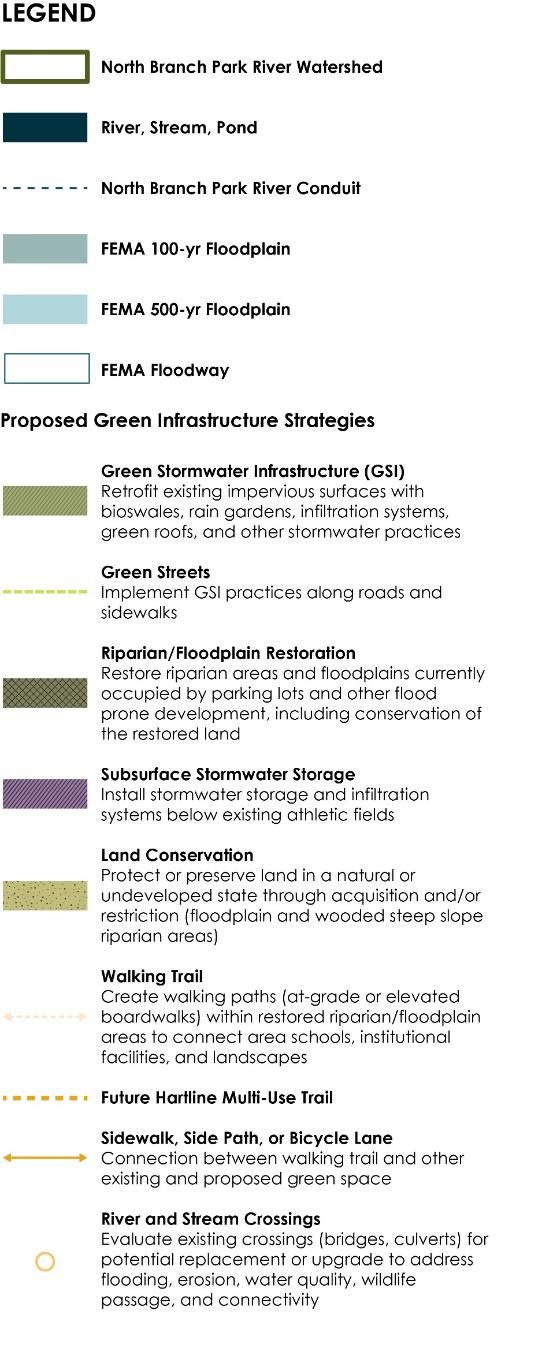
EVALUATE RIVER CROSSING FOR REPLACEMENT
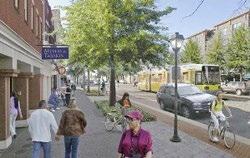
TRAIL CONNECTIONS
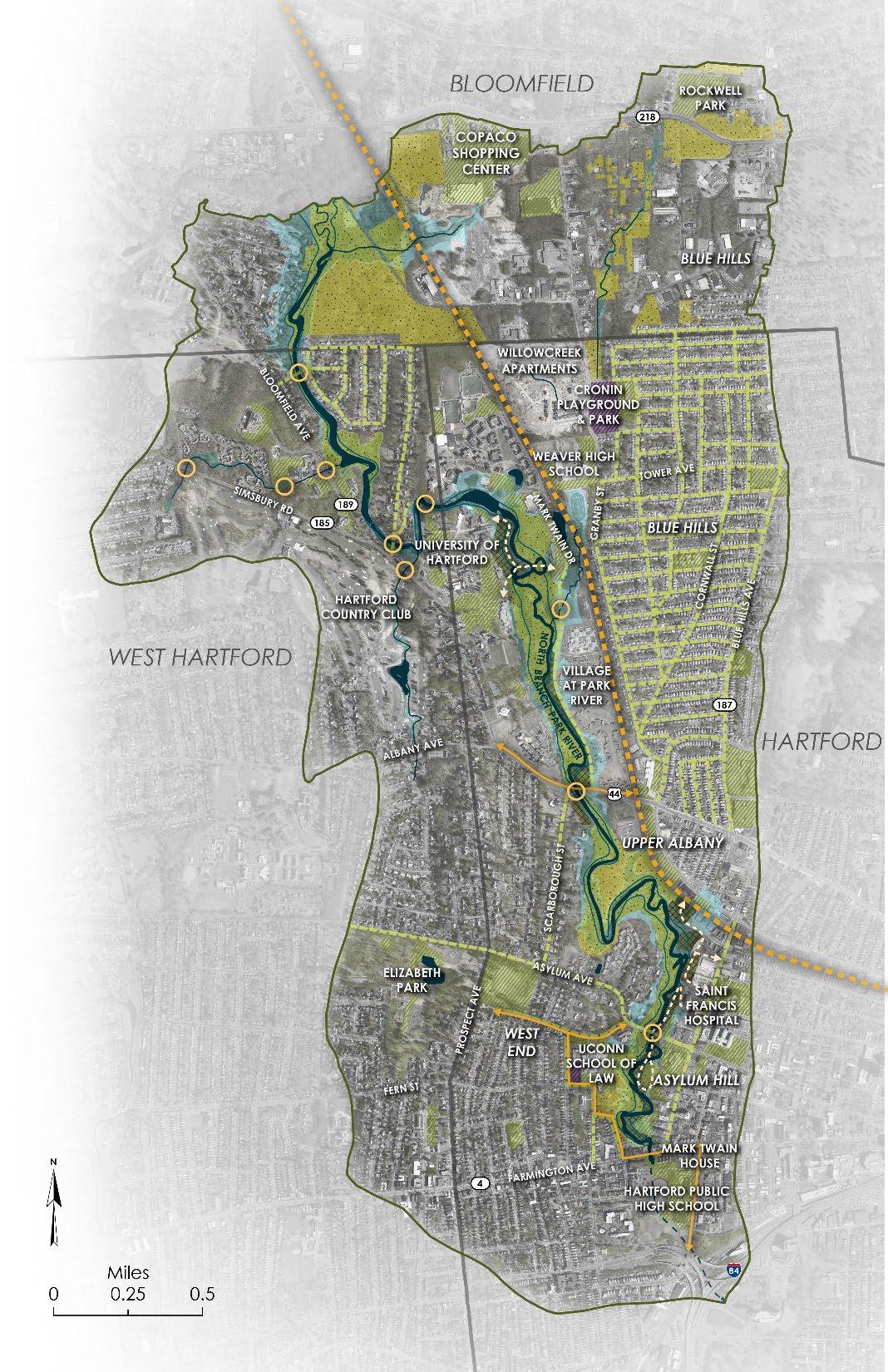
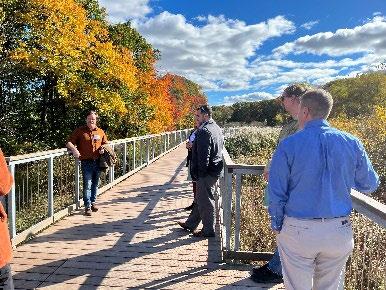
WALKING PATHS IN RESTORATION AREAS
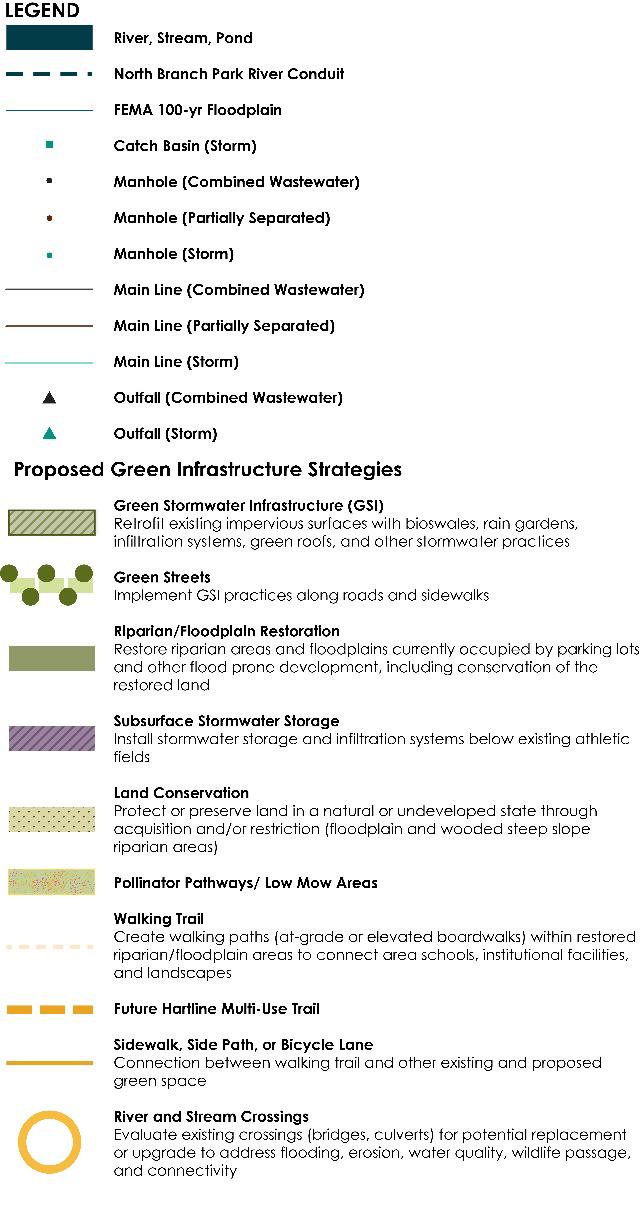
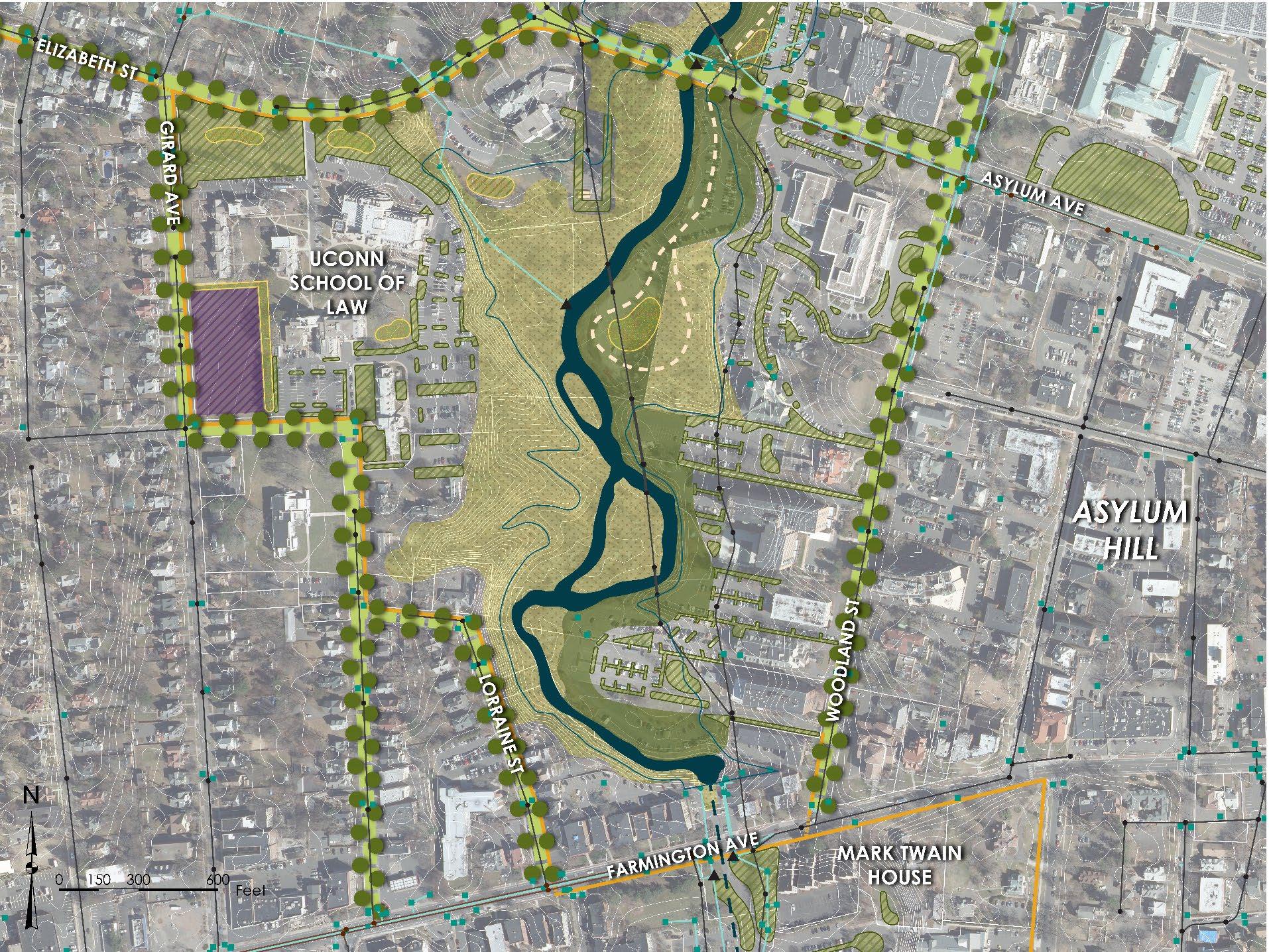
WALKING TRAILS / LOOP
FLOODPLAIN RESTORATION WITHIN EXISTING PARKING LOTS
SUBSURFACE STORMWATER STORAGE
GREEN STORMWATER INFRASTRUCTURE (TYP)
GREEN STREETS WITH SHADE TREES AND GSI (TYP)
LAND CONSERVATION
POLLINATOR GARDEN CSO N-10 CSO N-9
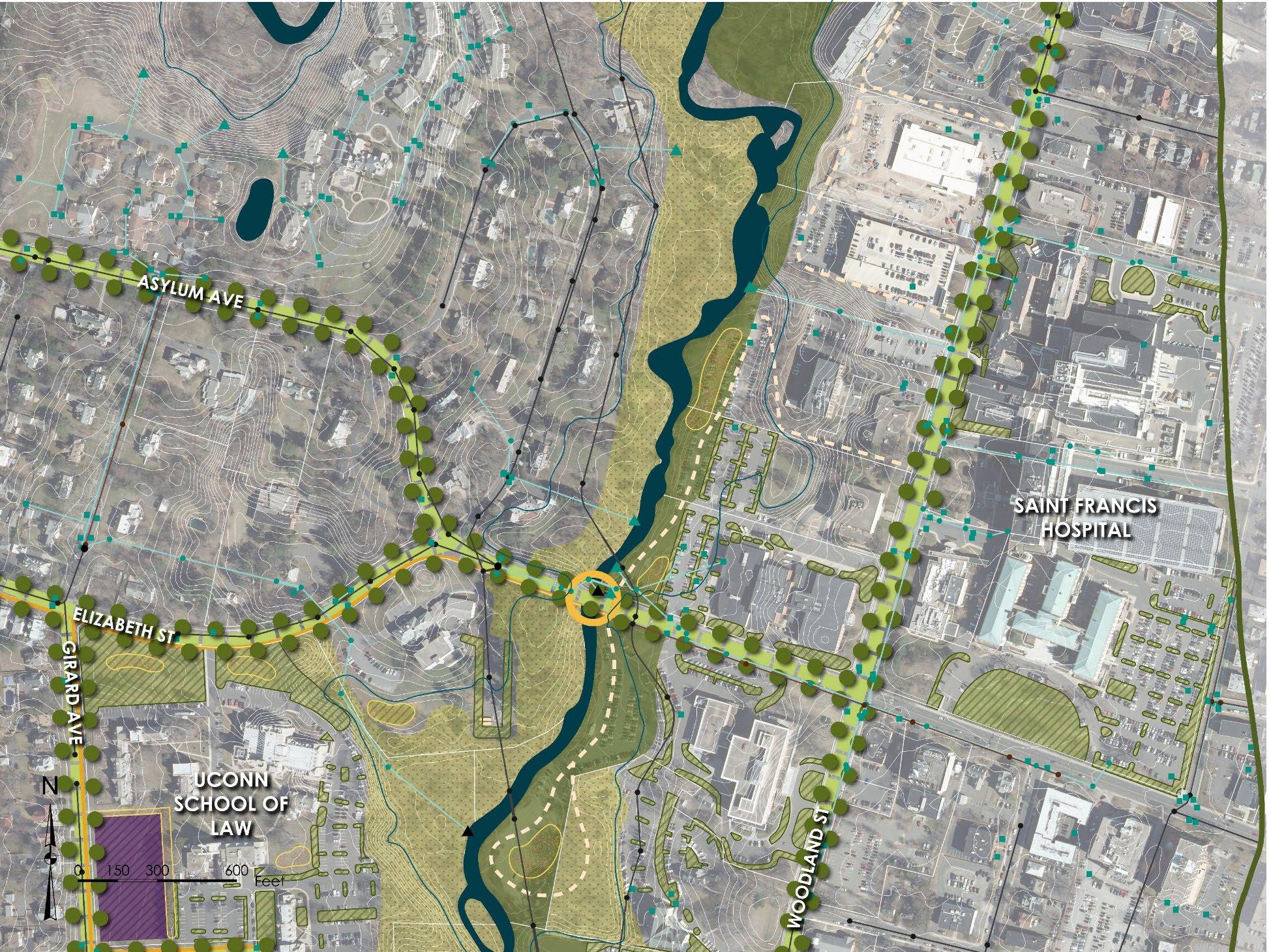
SUBSURFACE
STORMWATER STORAGE
FLOODPLAIN RESTORATION WITHIN EXISTING PARKING LOTS

WOODSIDE CIRCLE GOODWIN CIRCLE



WALKING TRAILS / LOOP
POLLINATOR GARDEN
LAND CONSERVATION



CONNECTICUT MUSEUM OF CULTURE AND HISTORY

EVALUATE EXISTING STREAM CROSSING (TYP)
CSO N-10

CLASSICAL MAGNET SCHOOL


CONNECTICUT COMMUNITY COLLEGES


 CSO N-9
CSO N-9
• Design Stations (after this presentation)
• Download full set from Project Website
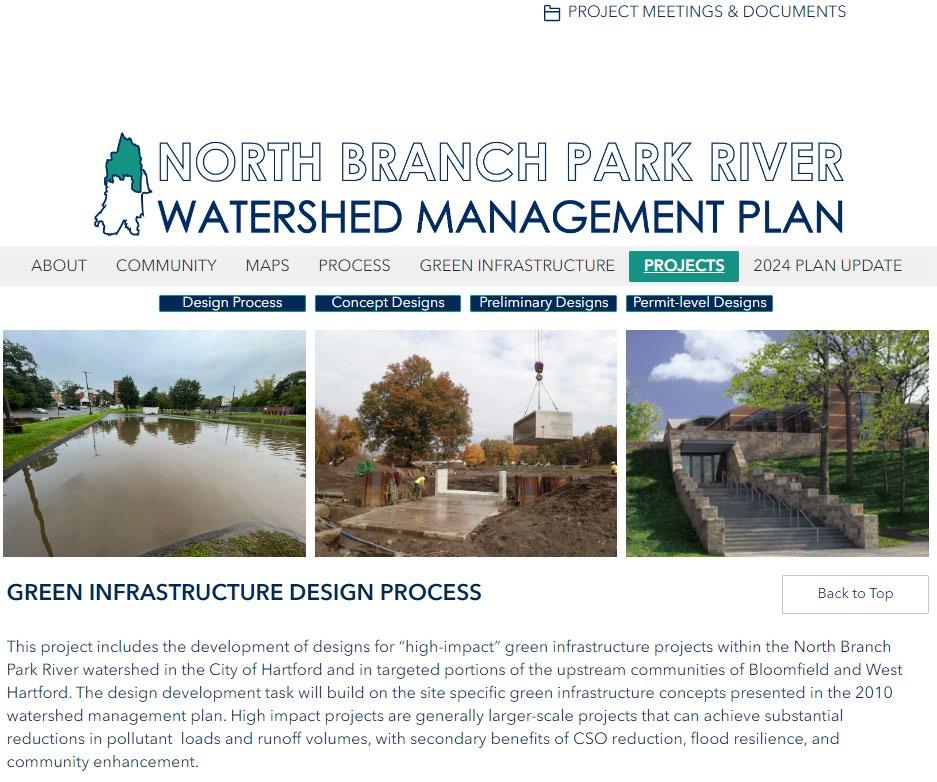

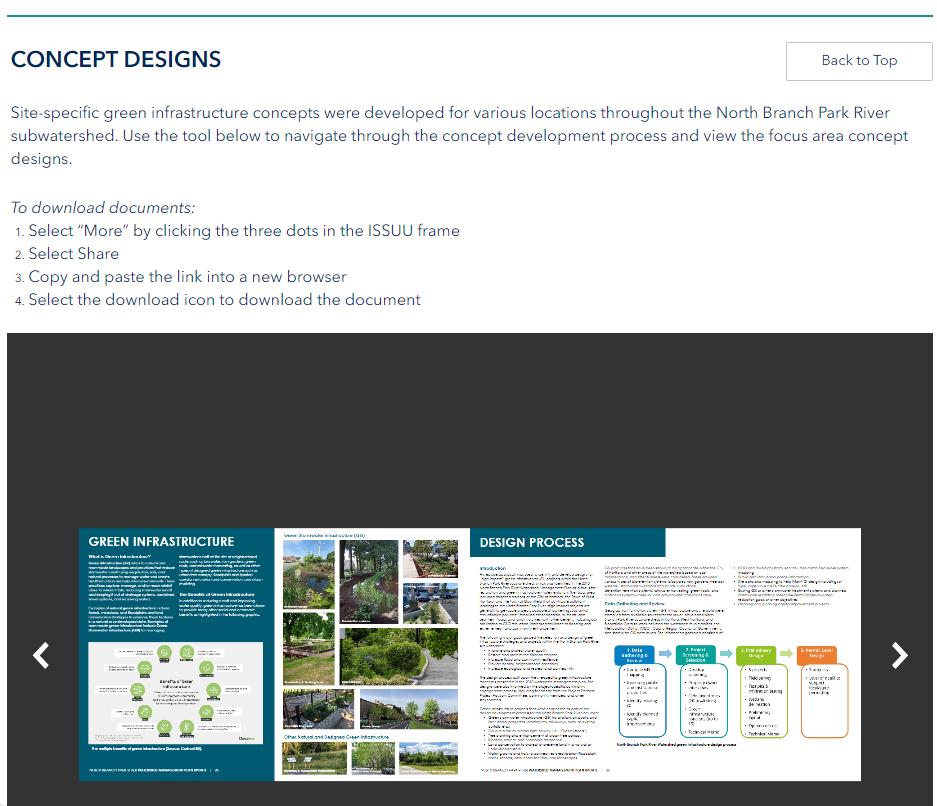

https://issuu.com/fando1/docs/nbpr_green_infrastructure_concept_design Project Website:

• Green Infrastructure Design Development
− Select five (5) concepts for preliminary design
• Benefits to water quality
• Demonstration value & scalability
• Other benefits (resilience, habitat, community amenity, etc.)
• Community and property owner feedback and support are critical!
− Complete preliminary designs
− Take three (3) preliminary designs to permit-level designs
• Complete Watershed Plan Update
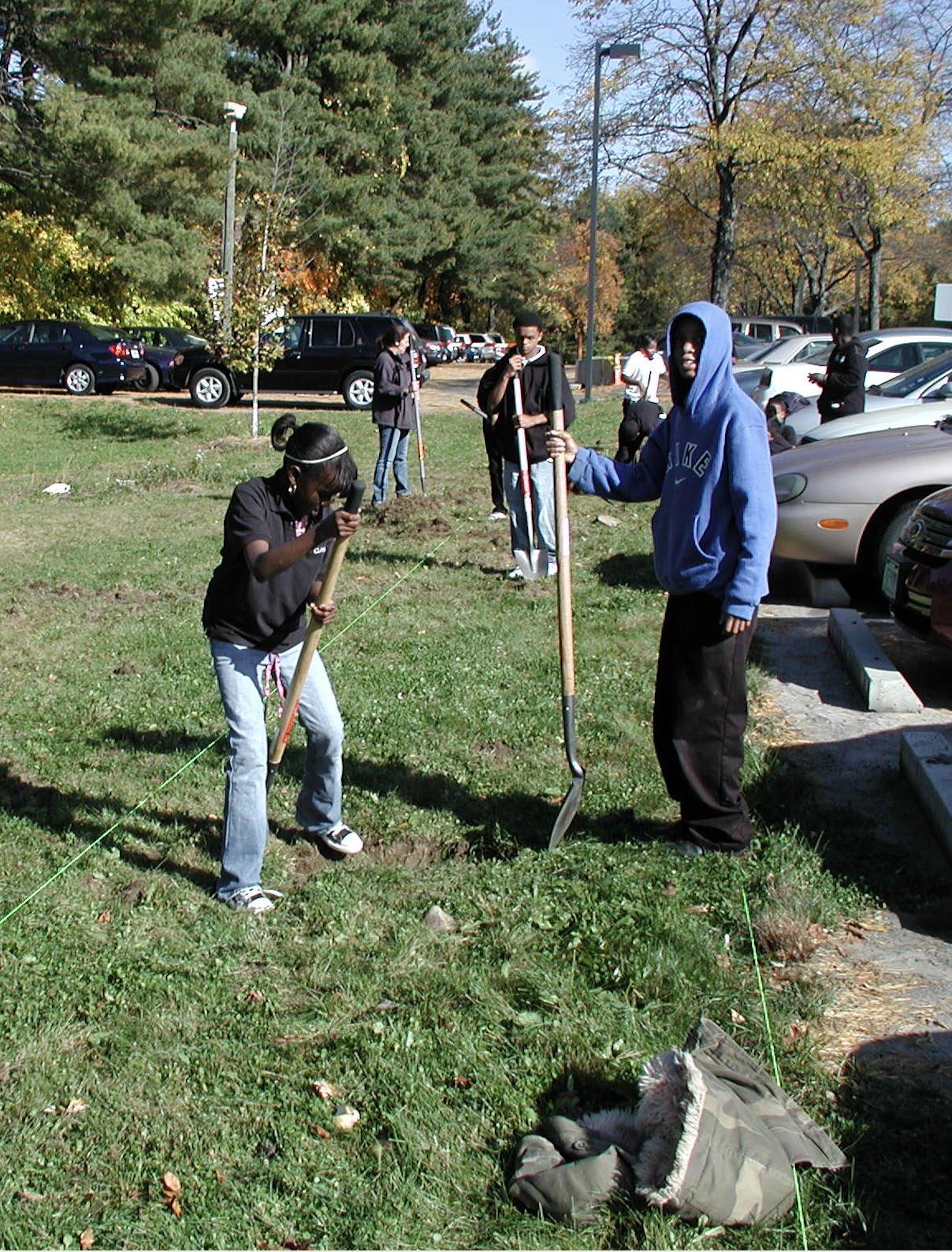
• Ongoing Stakeholder Engagement
− Community Walkshops & Meetings
− Additional Town Hall style meeting (preliminary designs)
− Advisory Committee & Project Partner Meetings
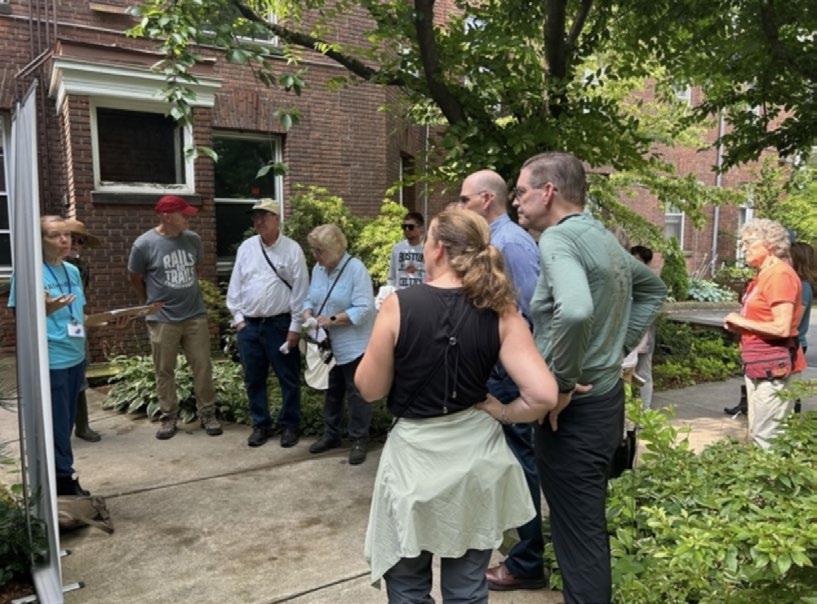
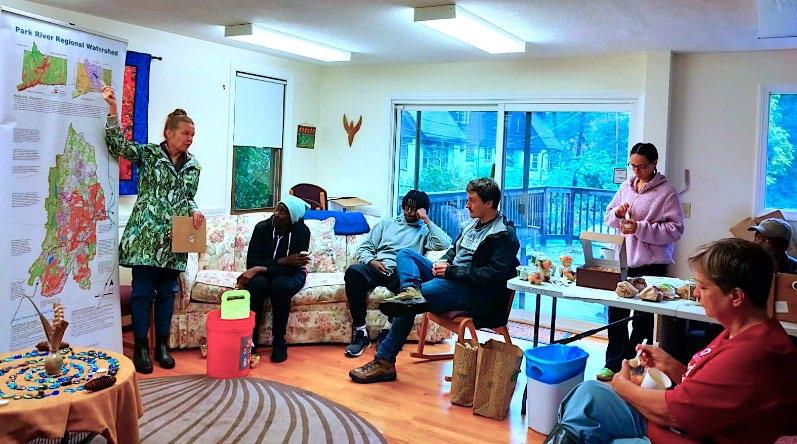
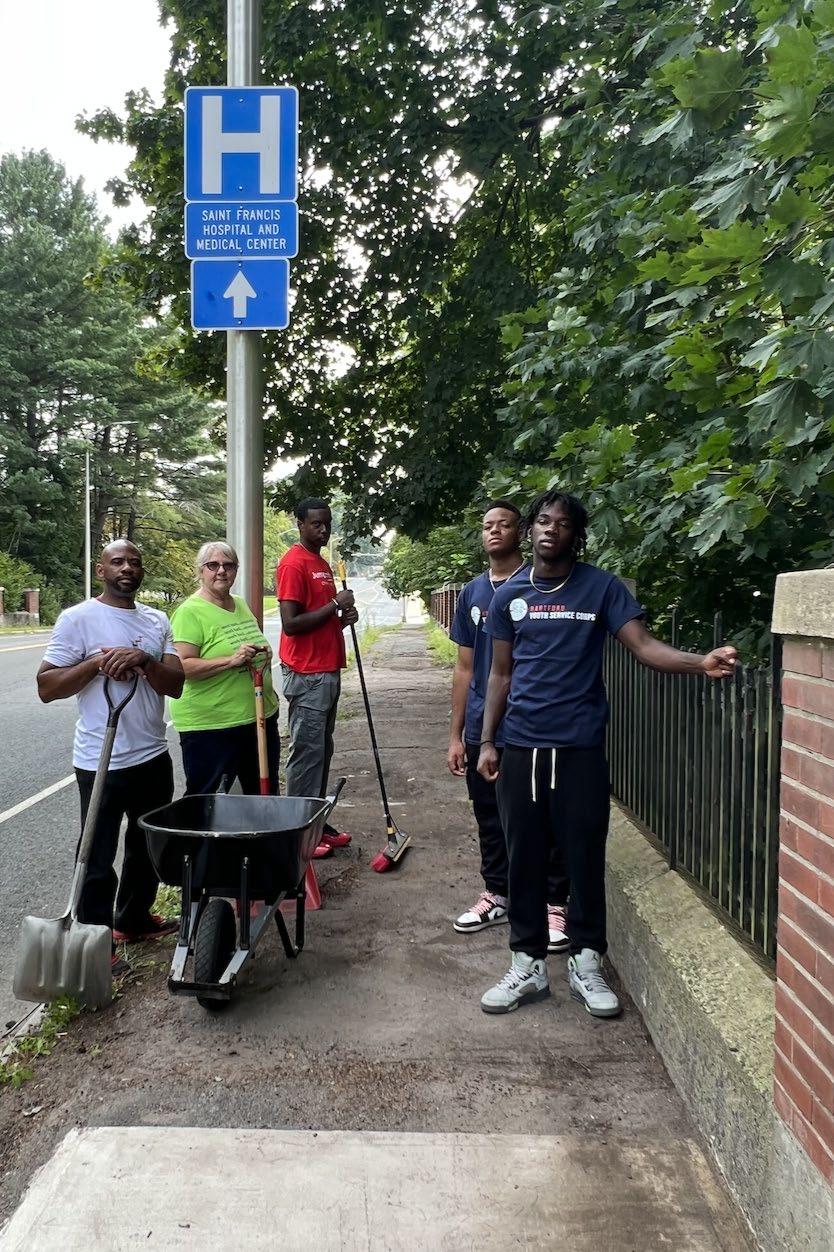
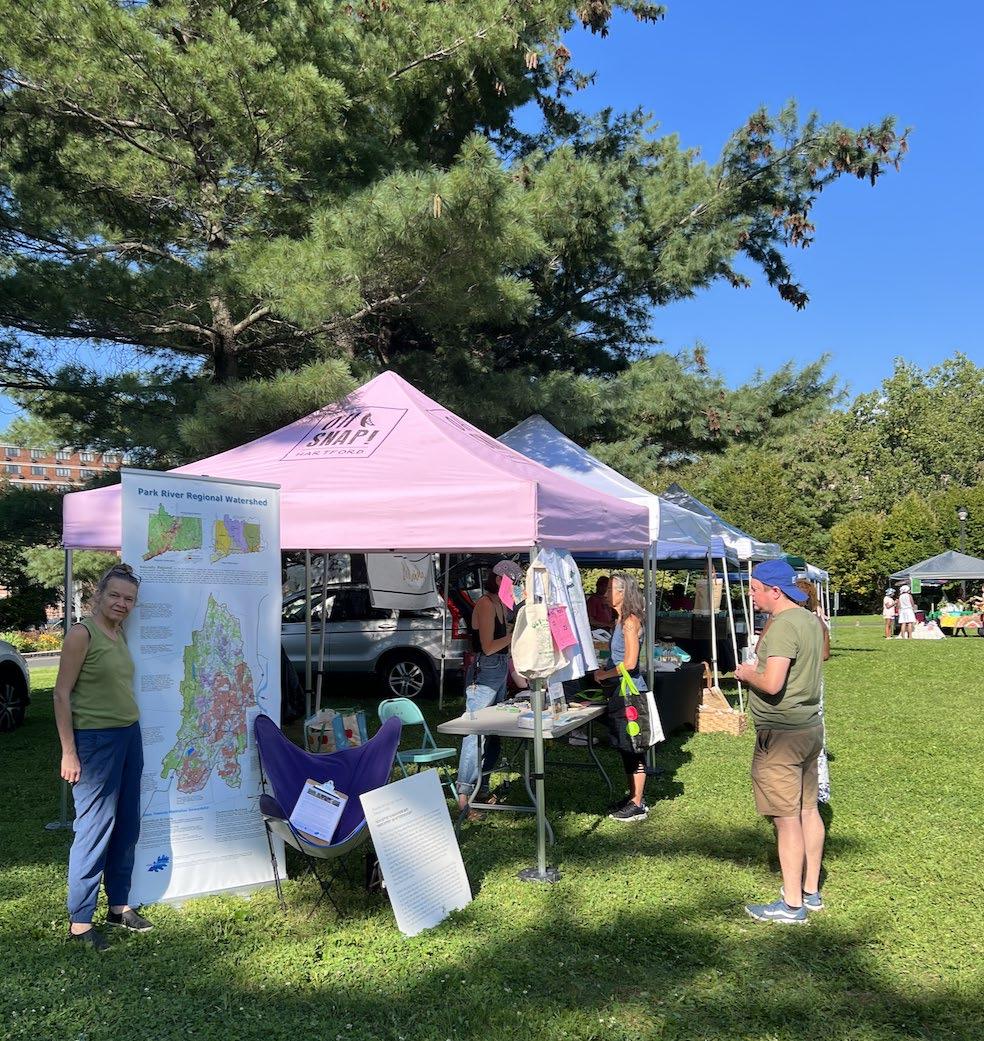
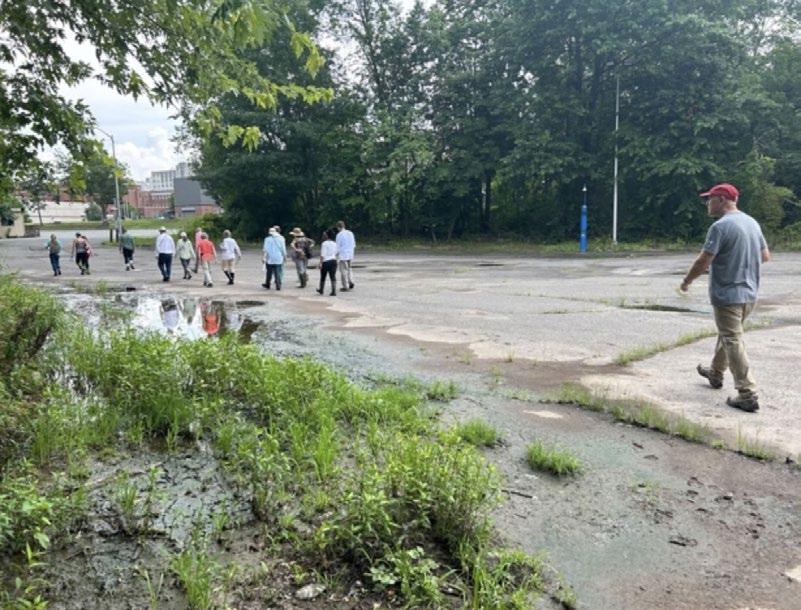

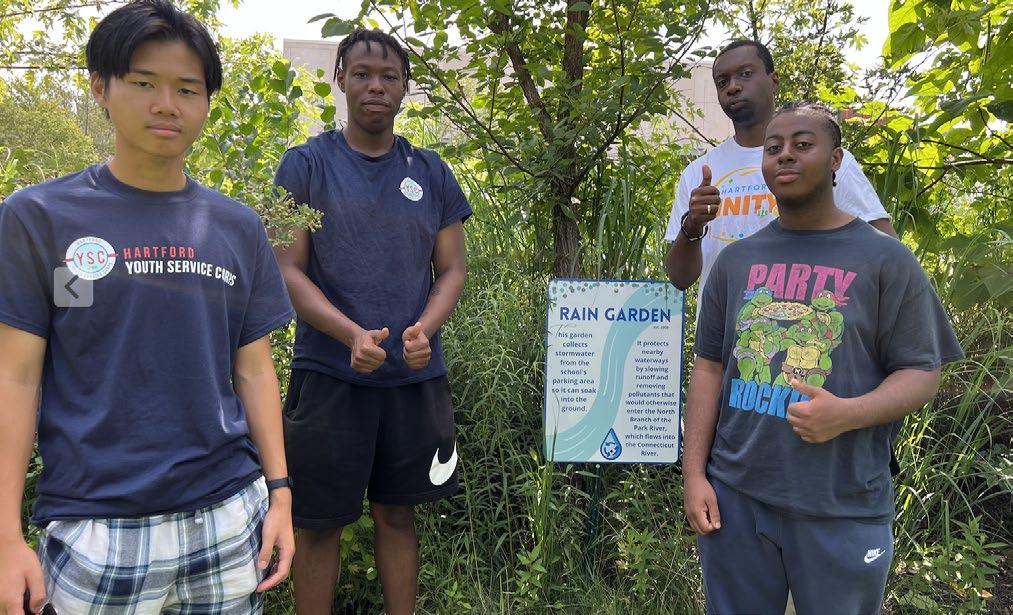
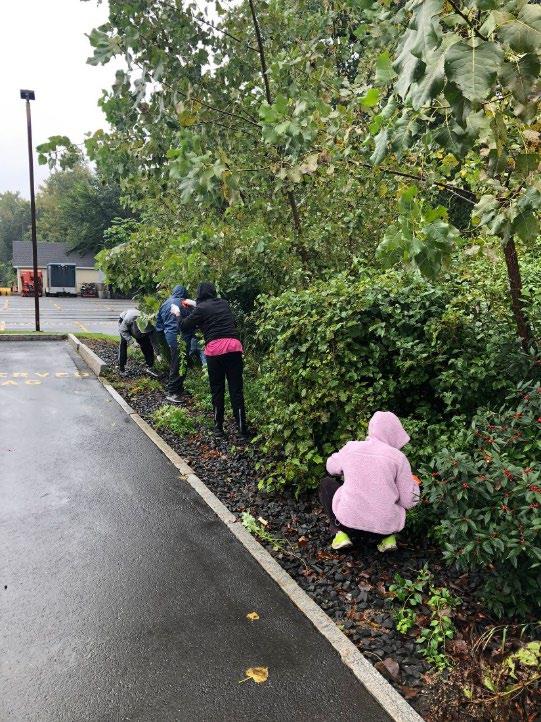

North Central Conservation District


Contacts: Joanna Shapiro jshapiro@conservect.org
Erik Mas, PE erik.mas@fando.com
Akta Patel, PE akta.patel@fando.com
Andrew Bohne, RLA andrew.bohne@fando.com
Mary Rickel Pelletier maryp@parkwatershed.org
Brian Martin Brian.Martin@tpl.org
Cally Guasti-O’Donoghue cally.guasti@tpl.org

